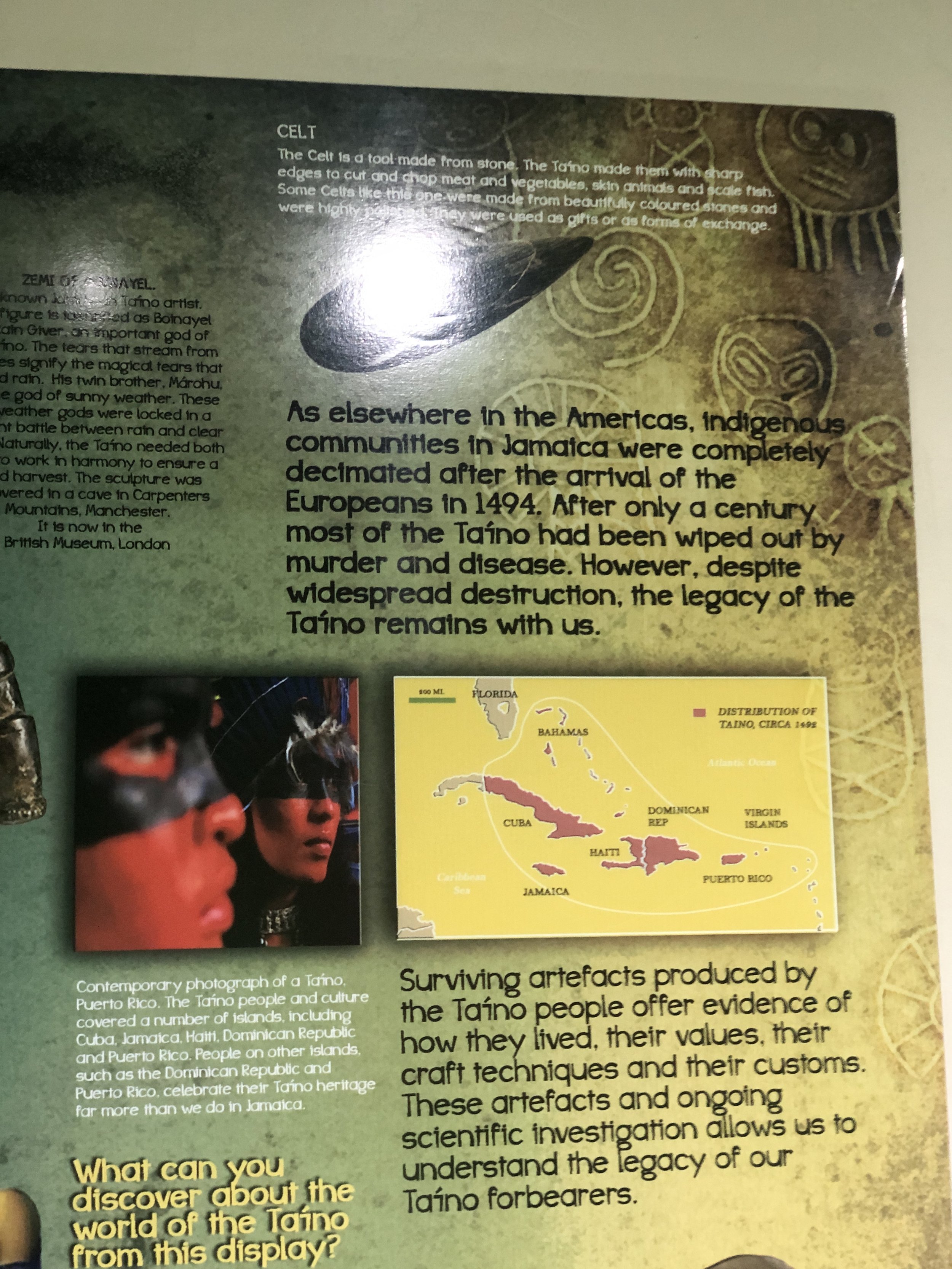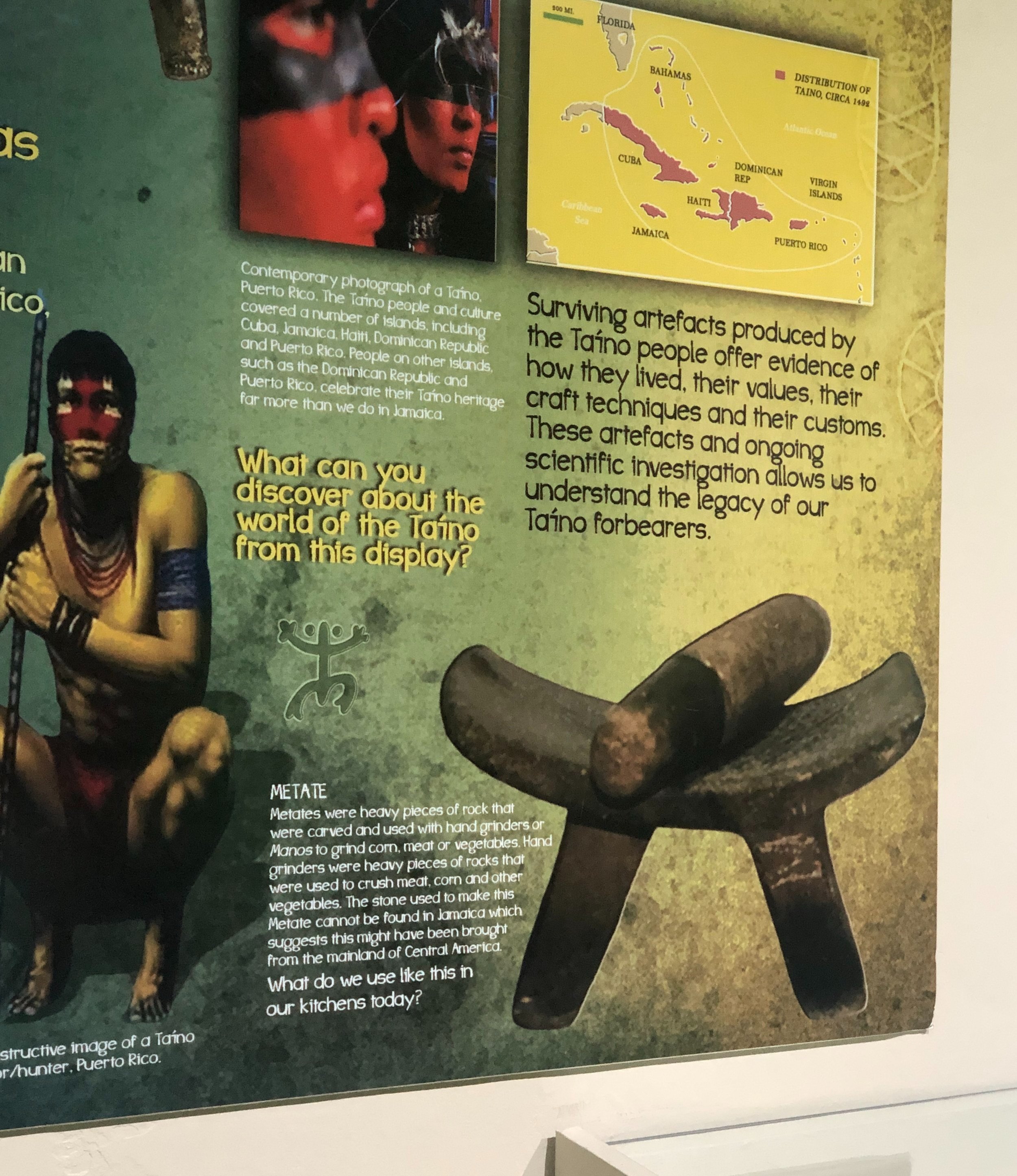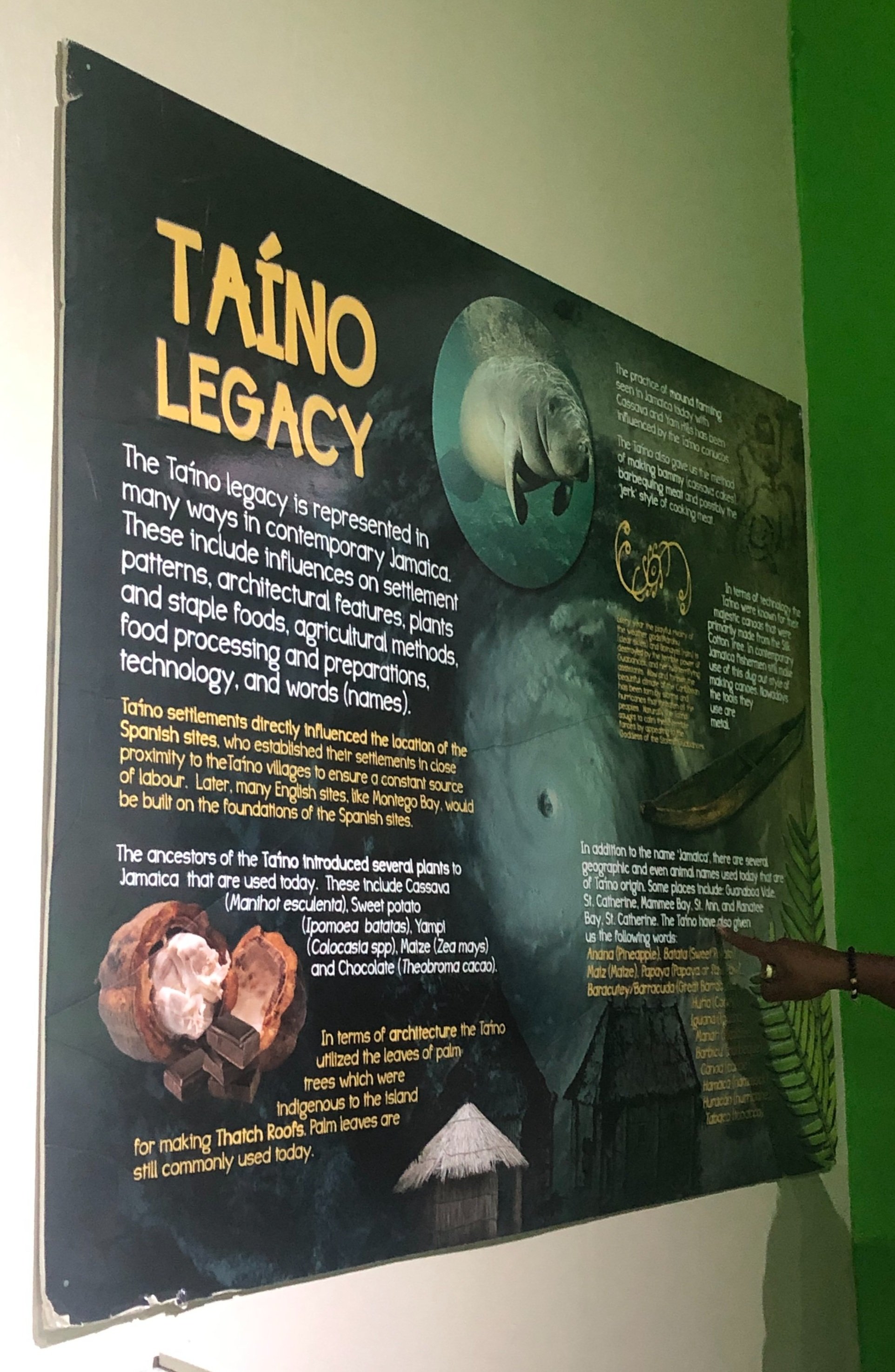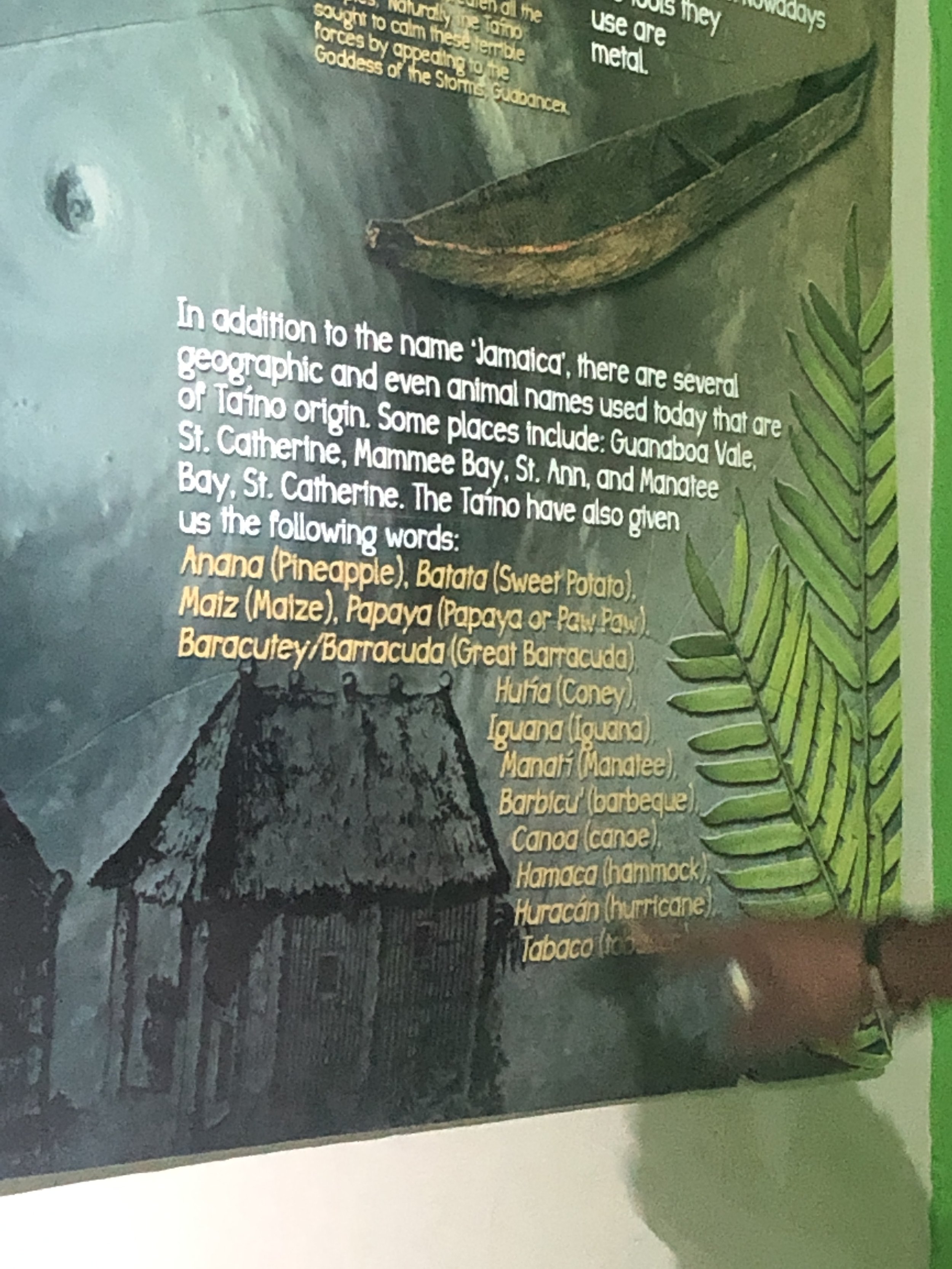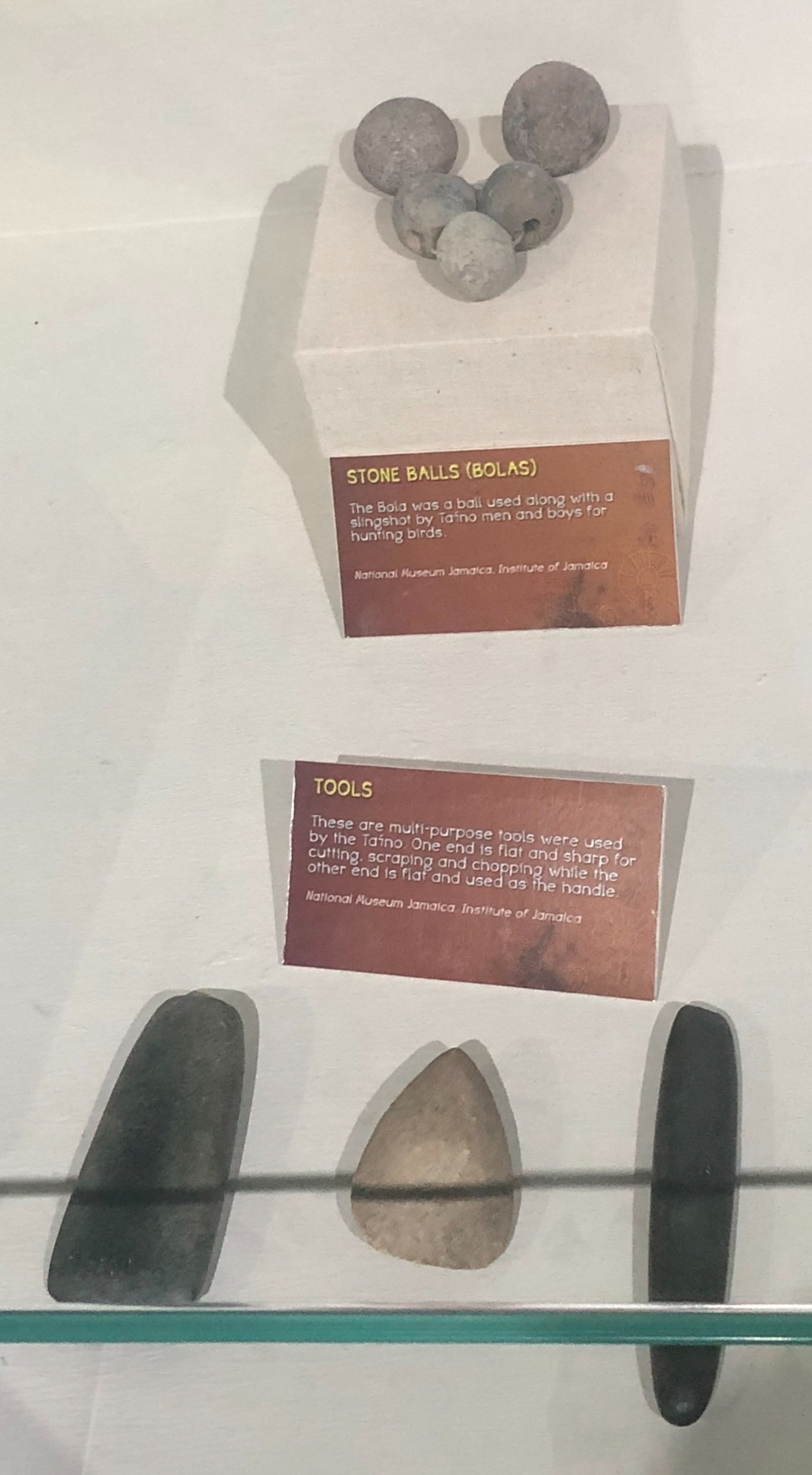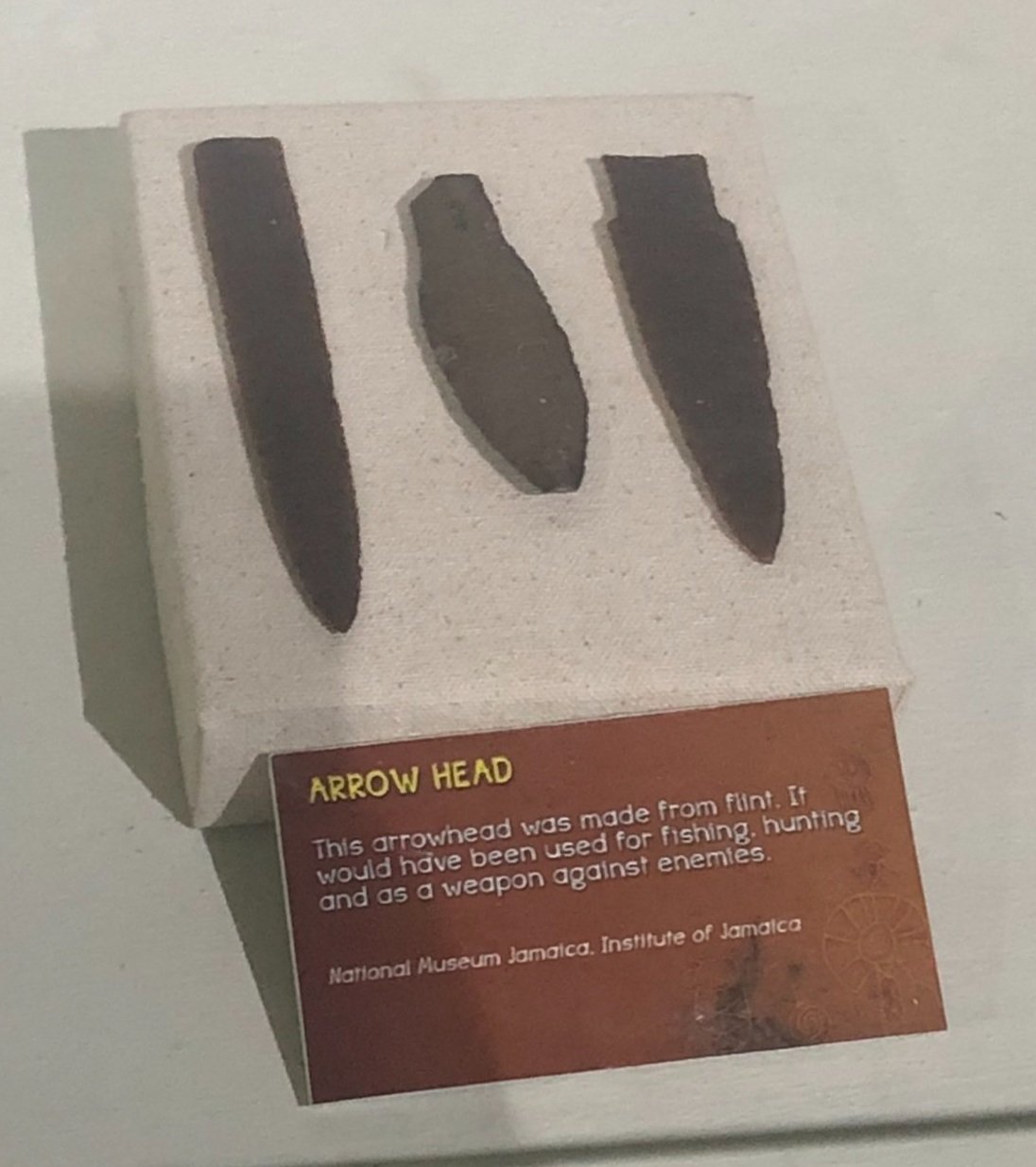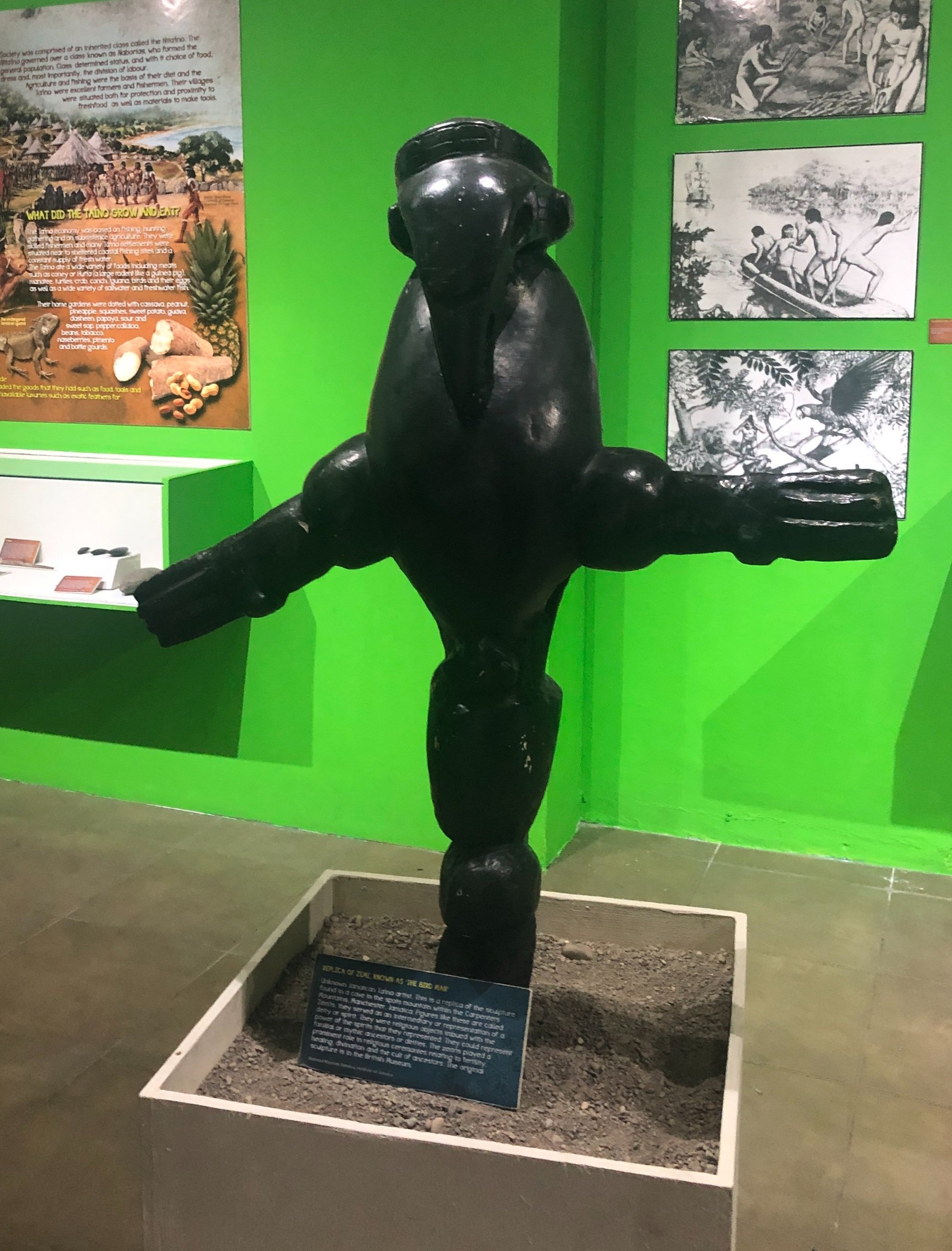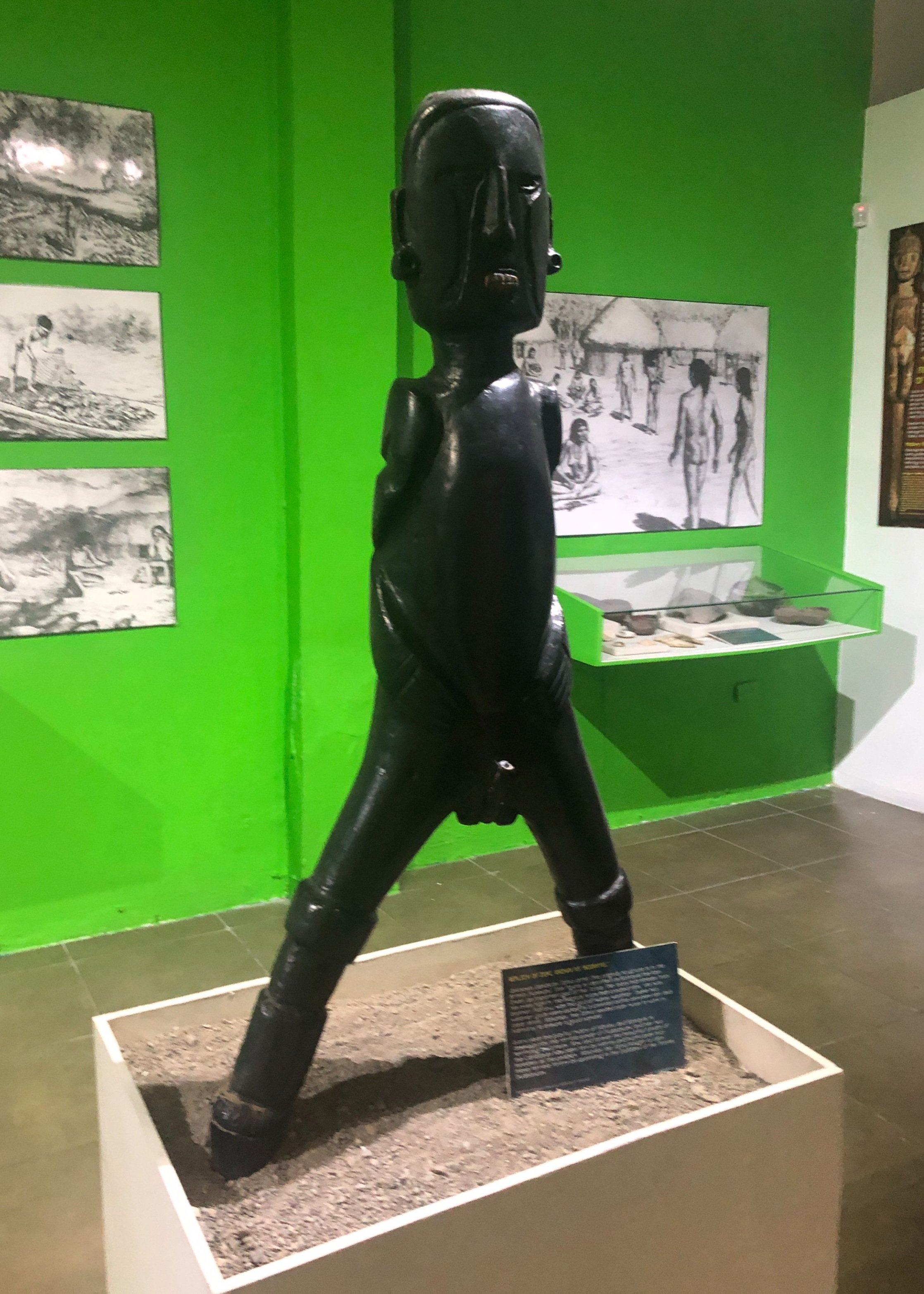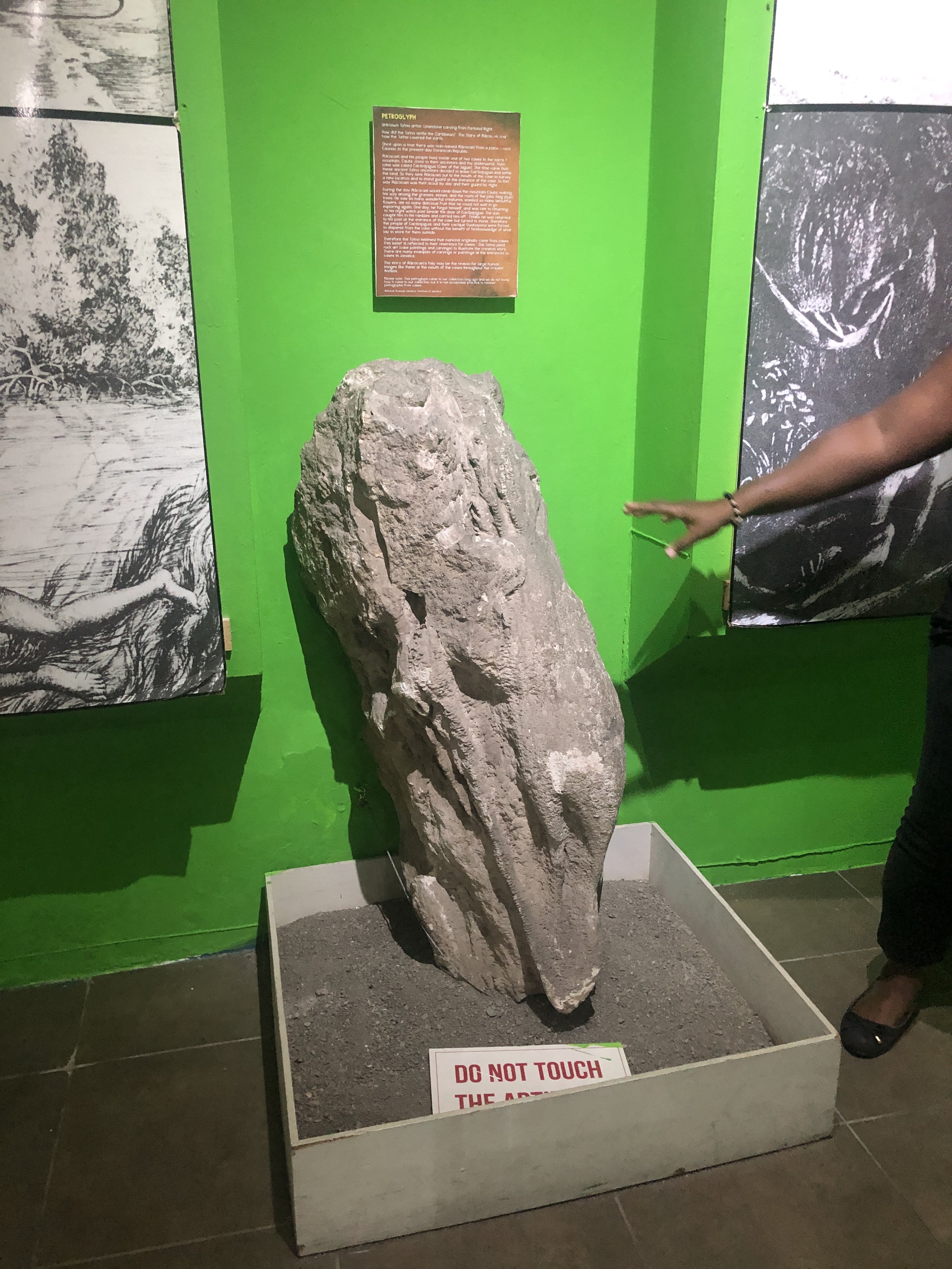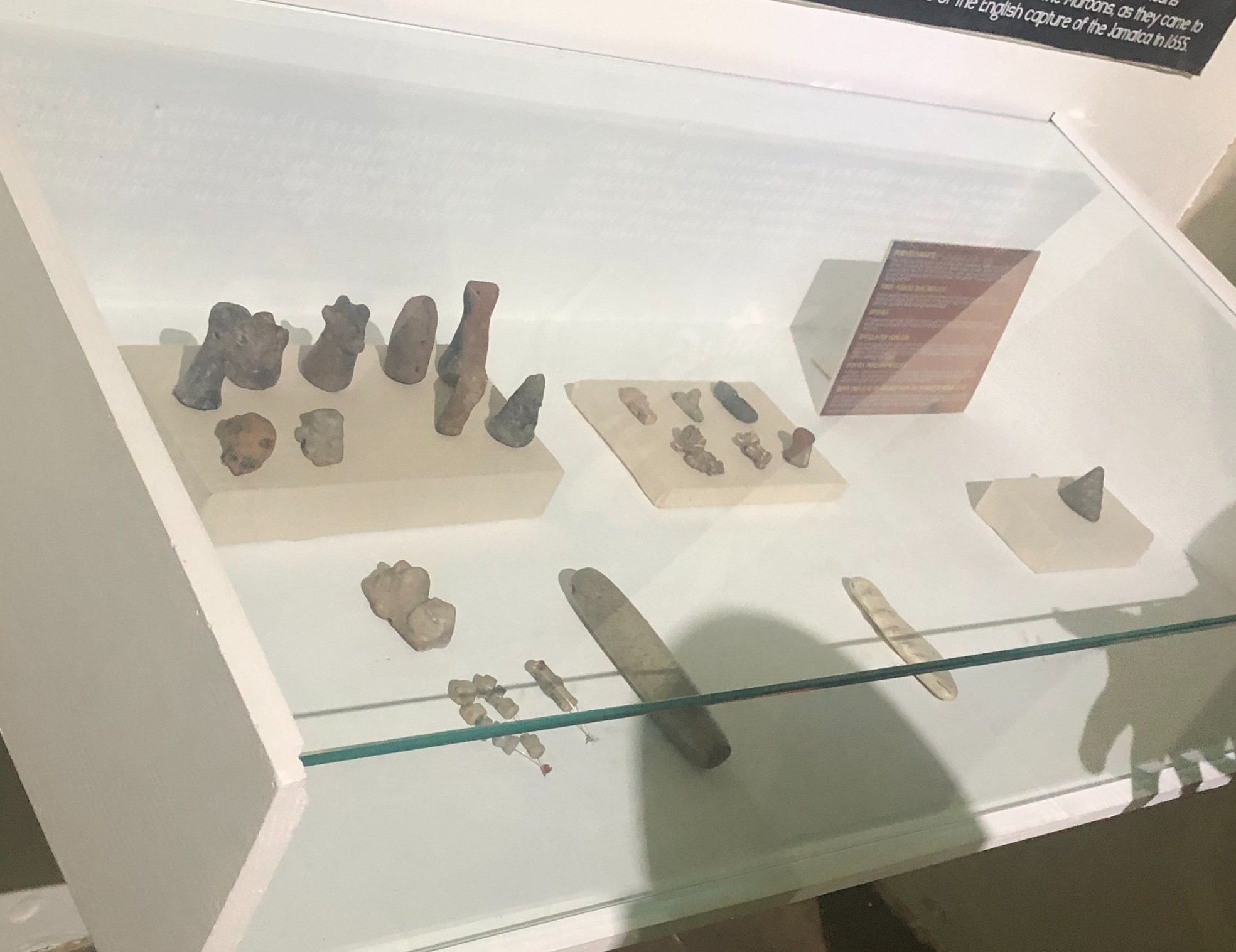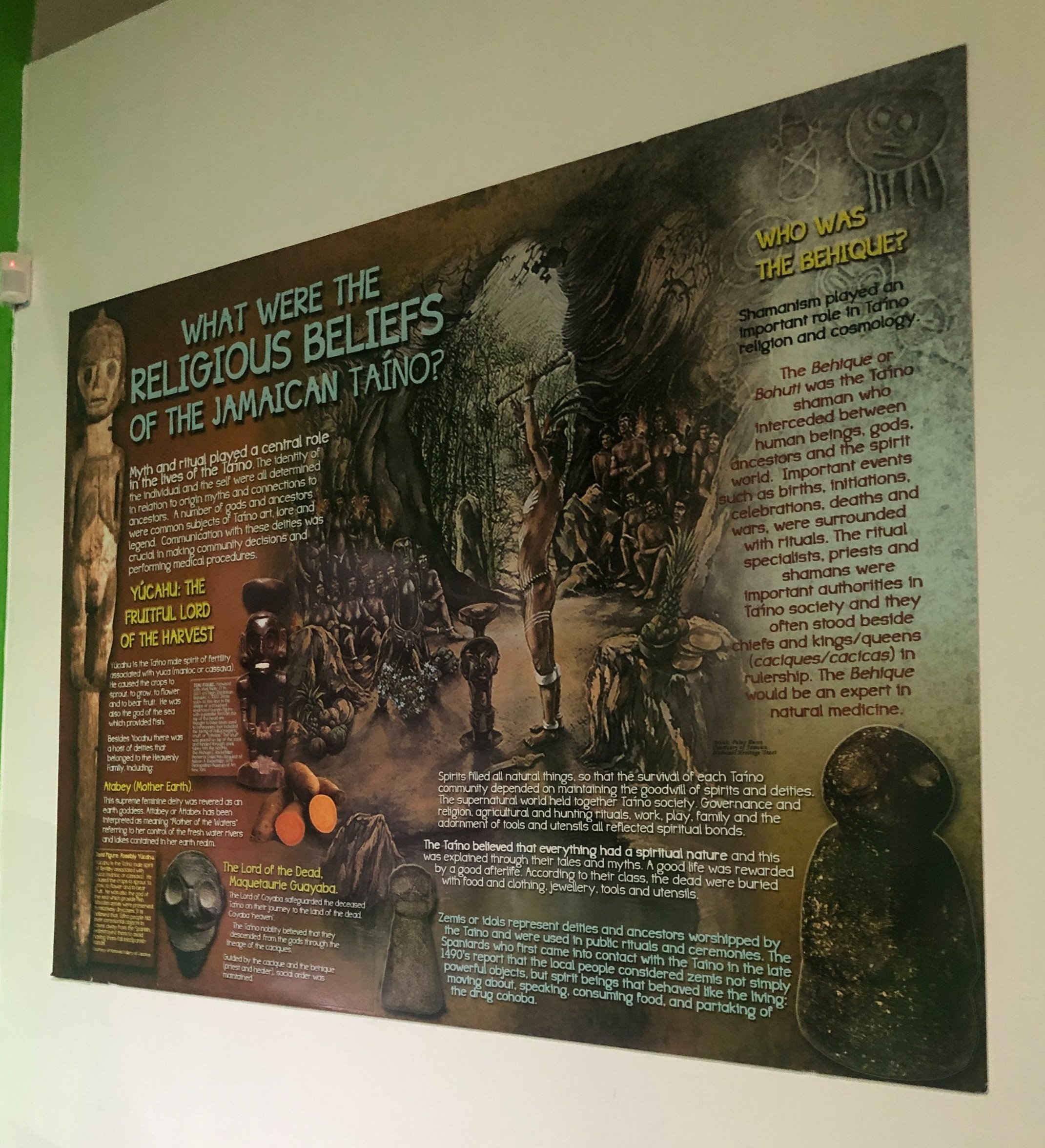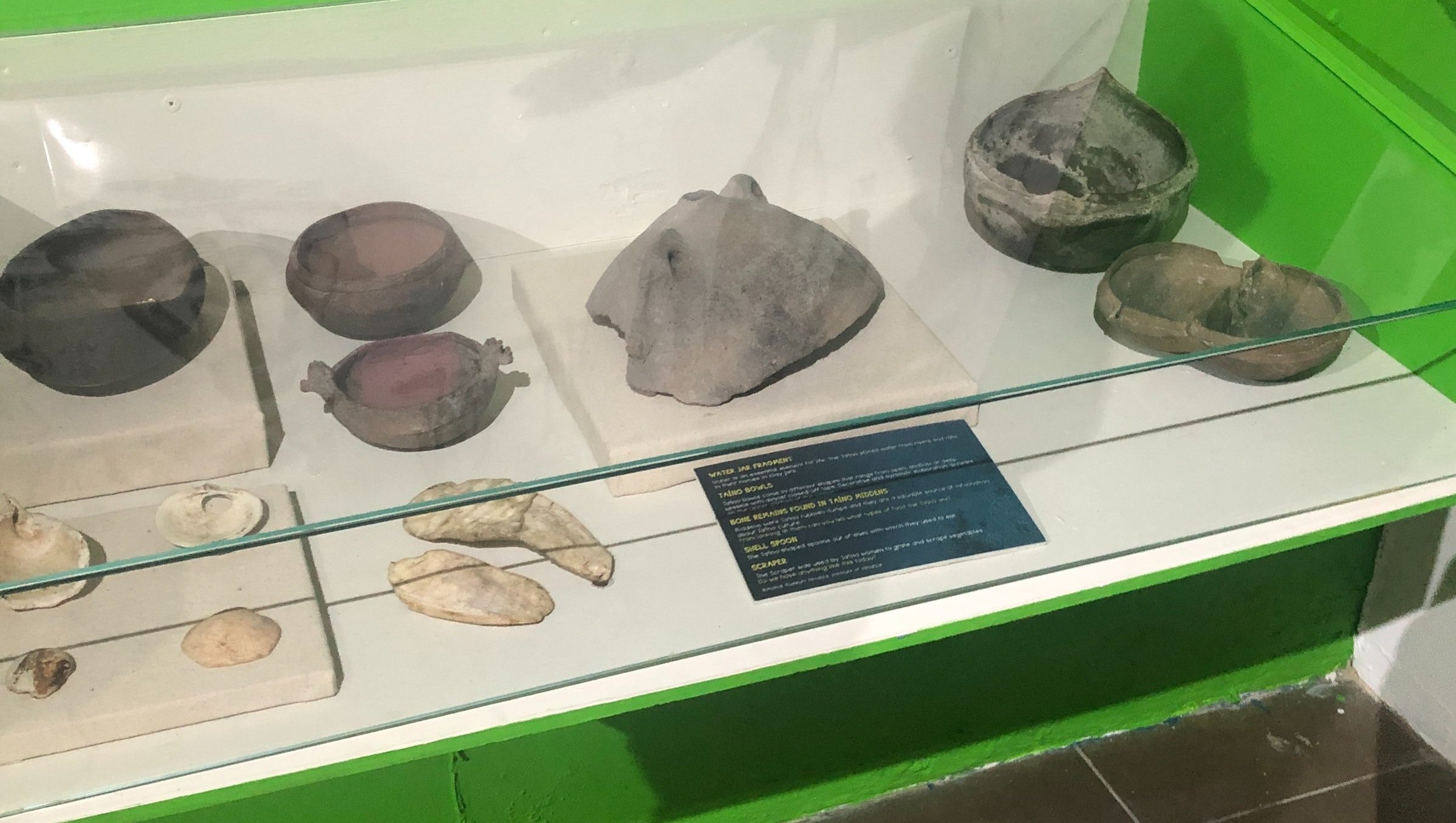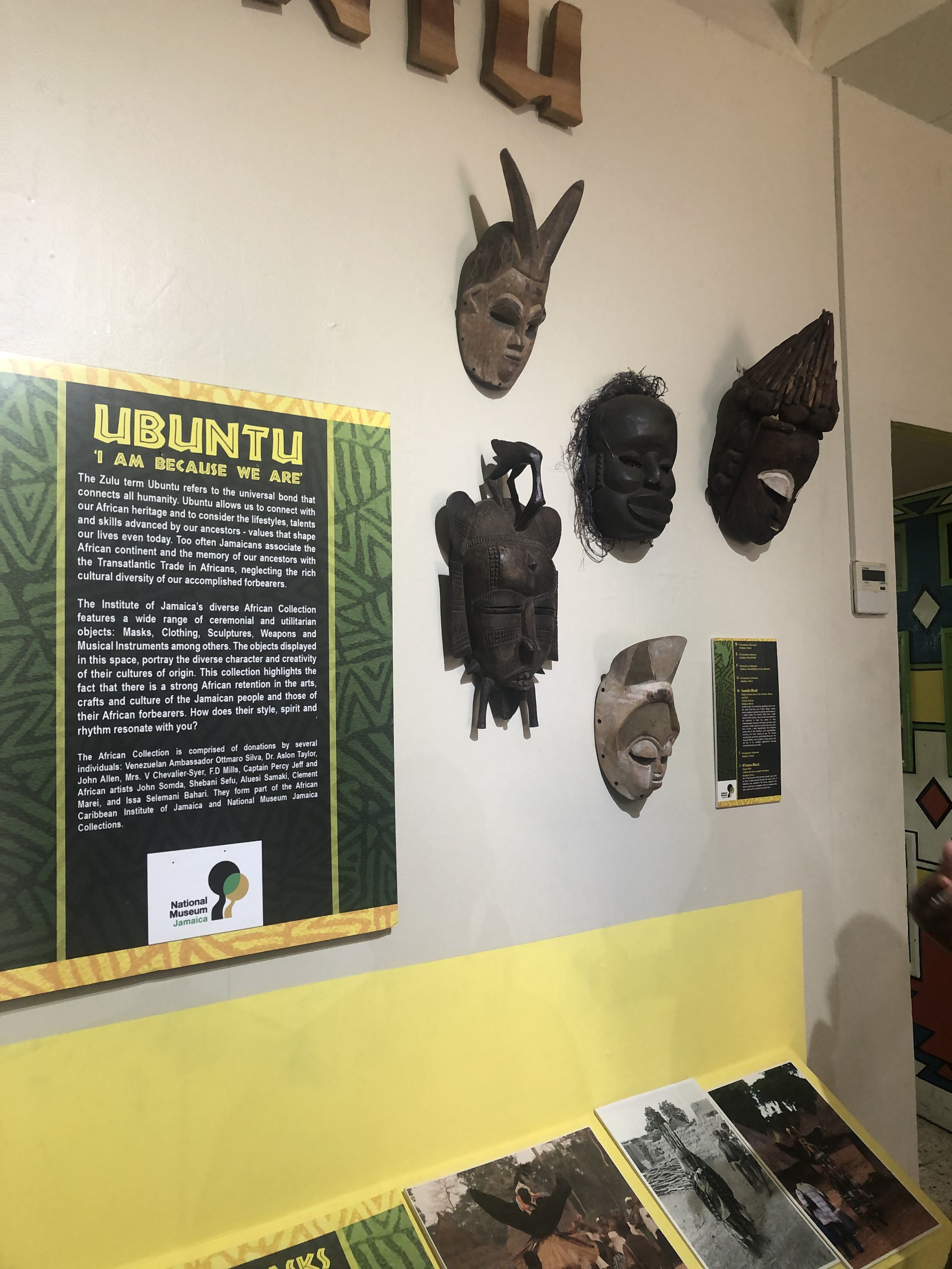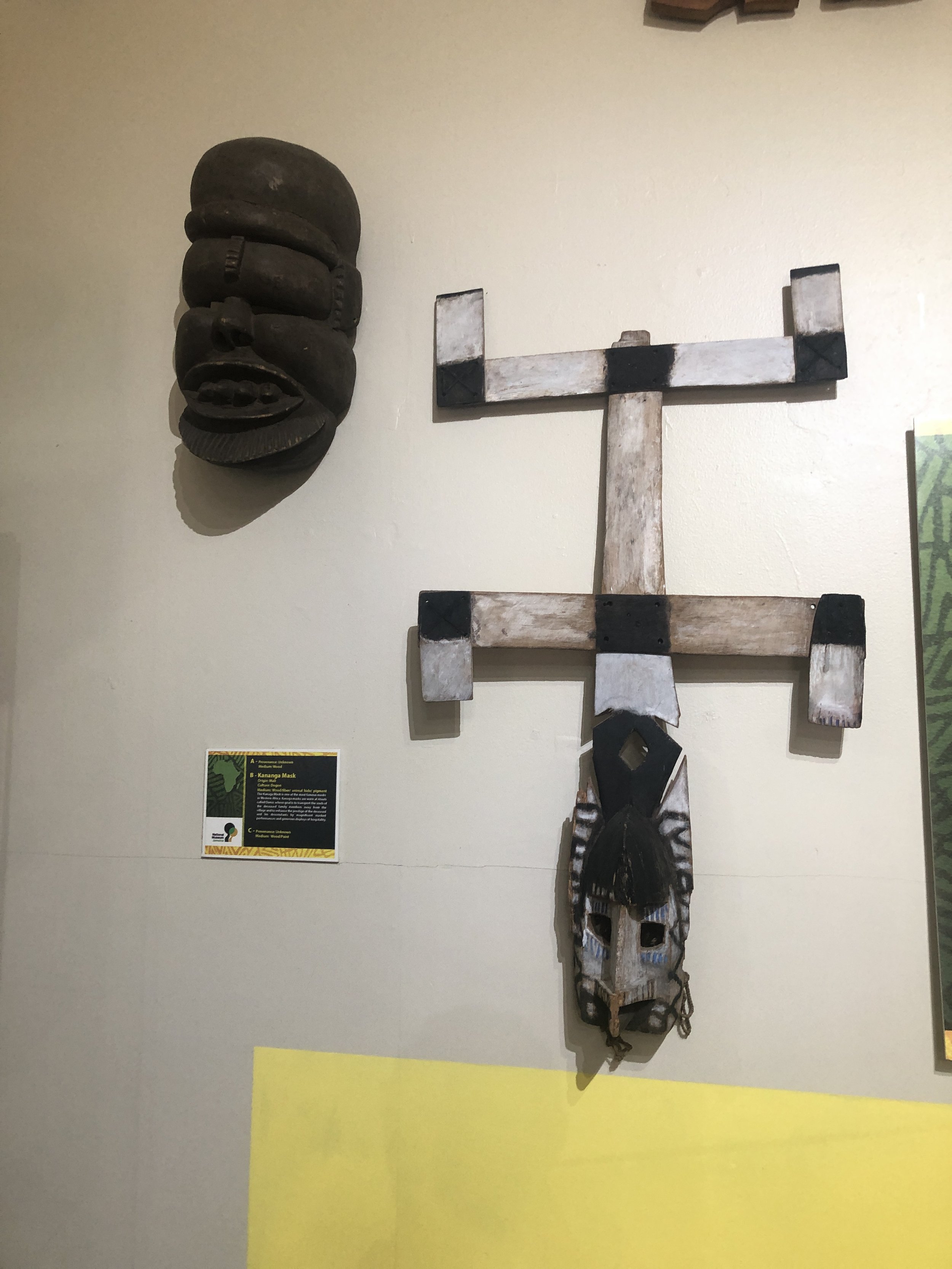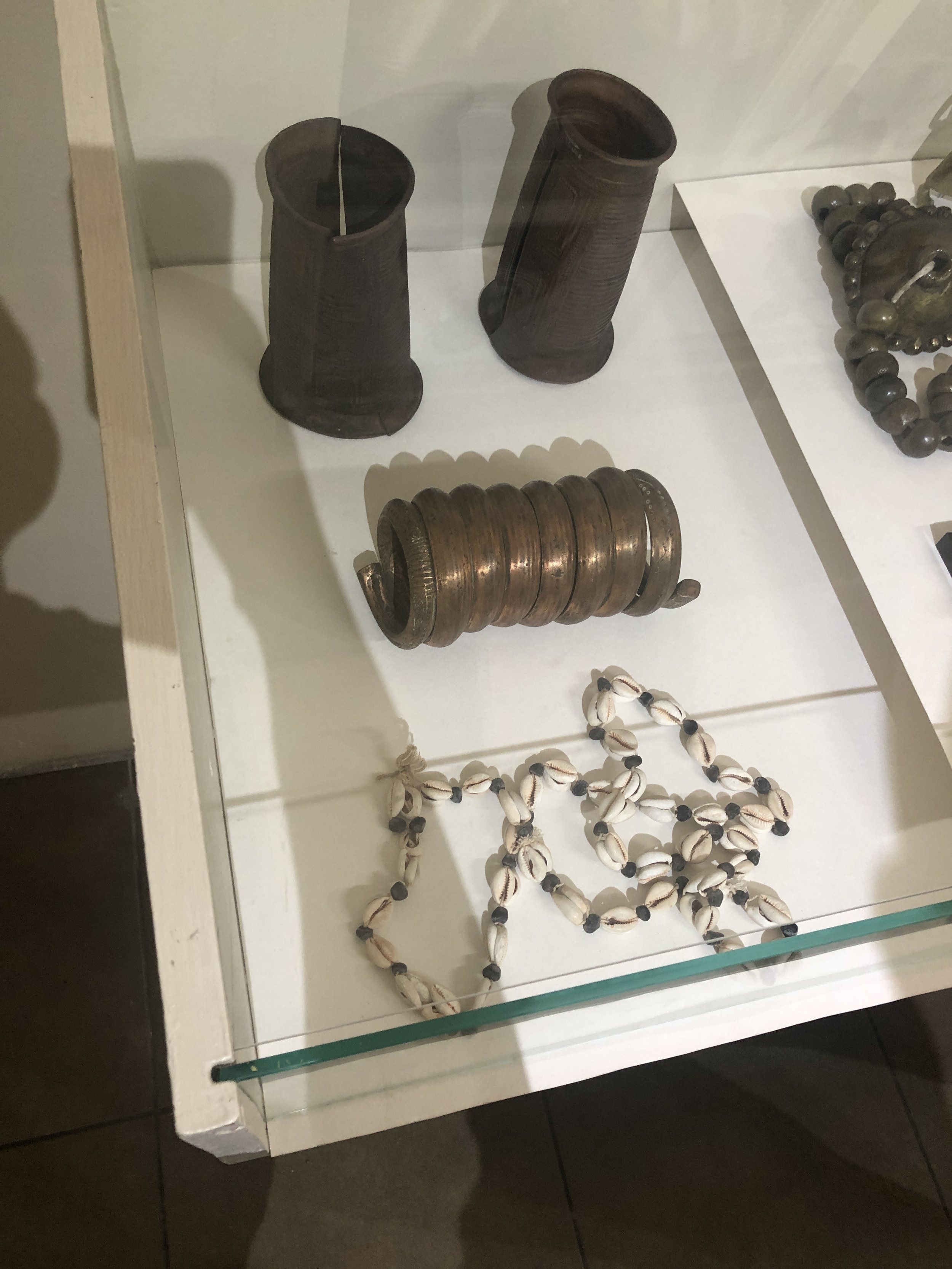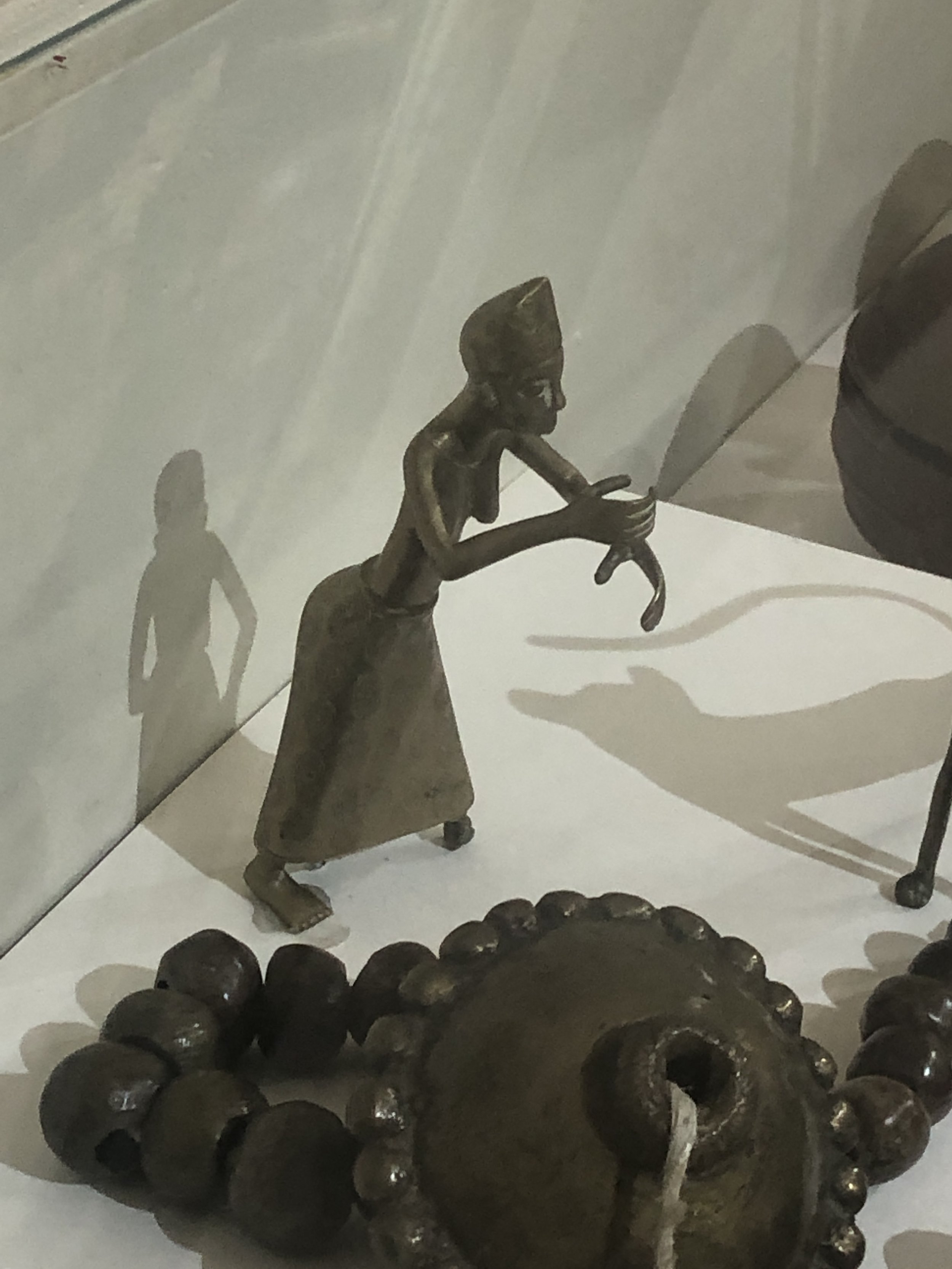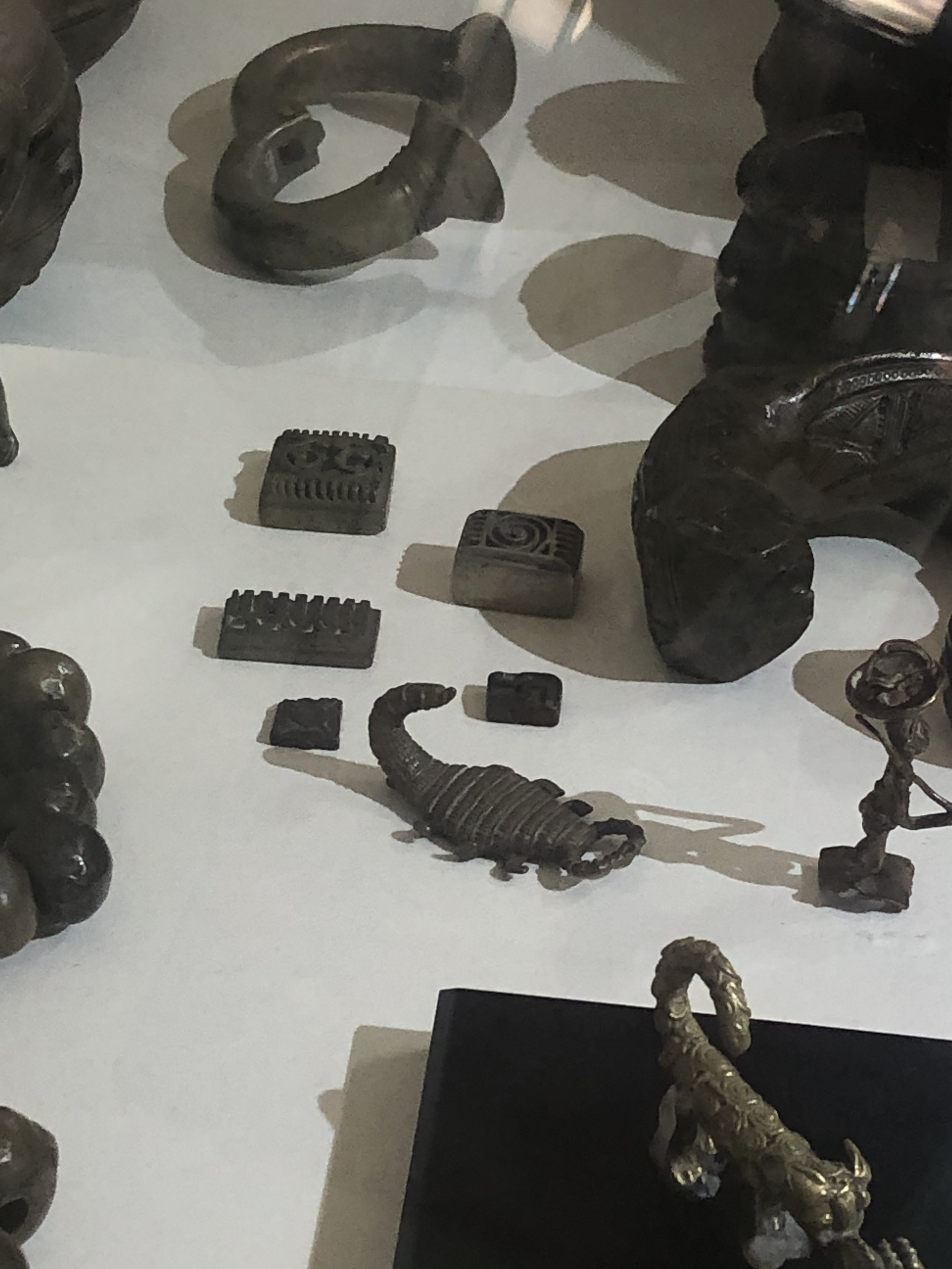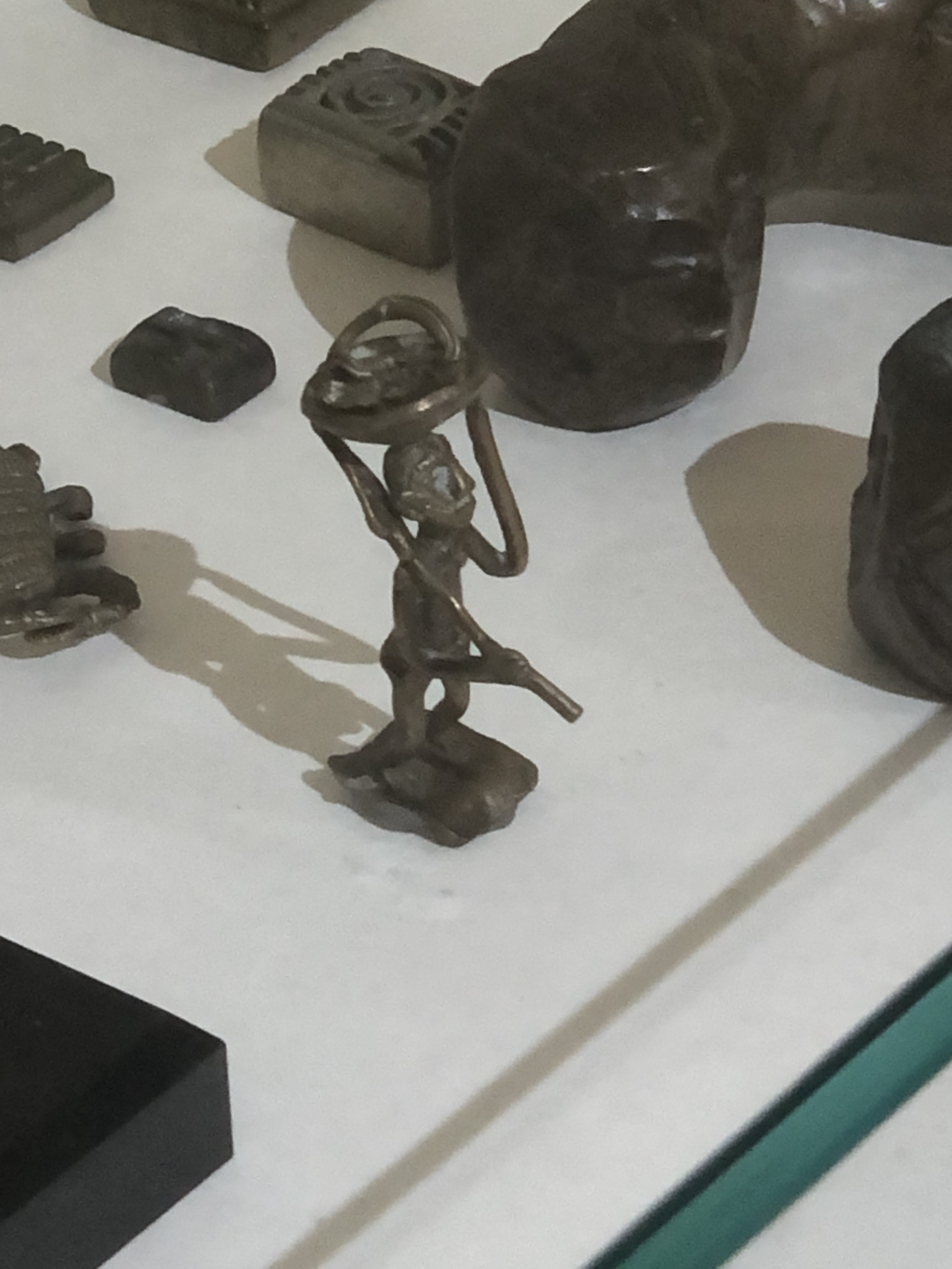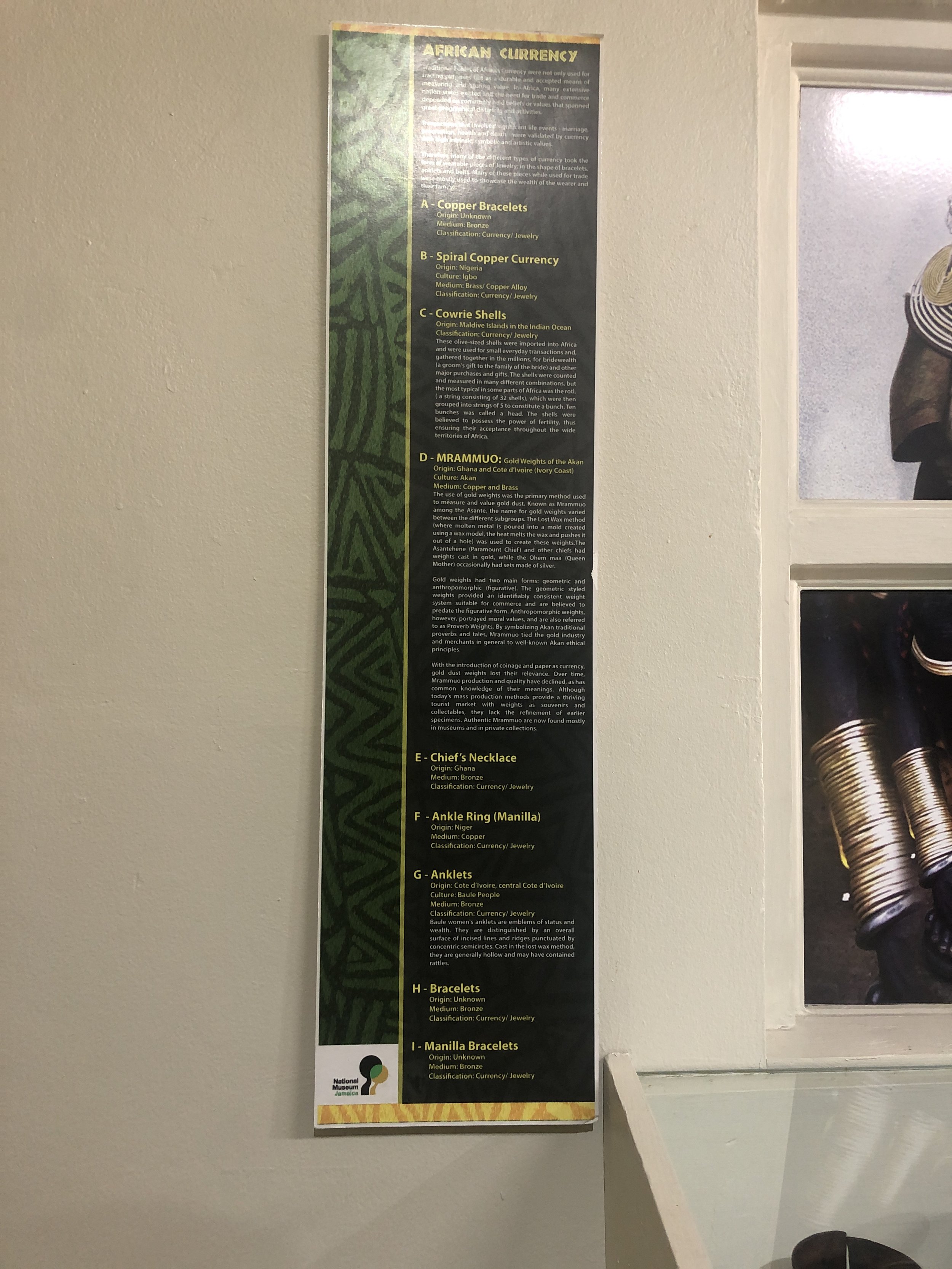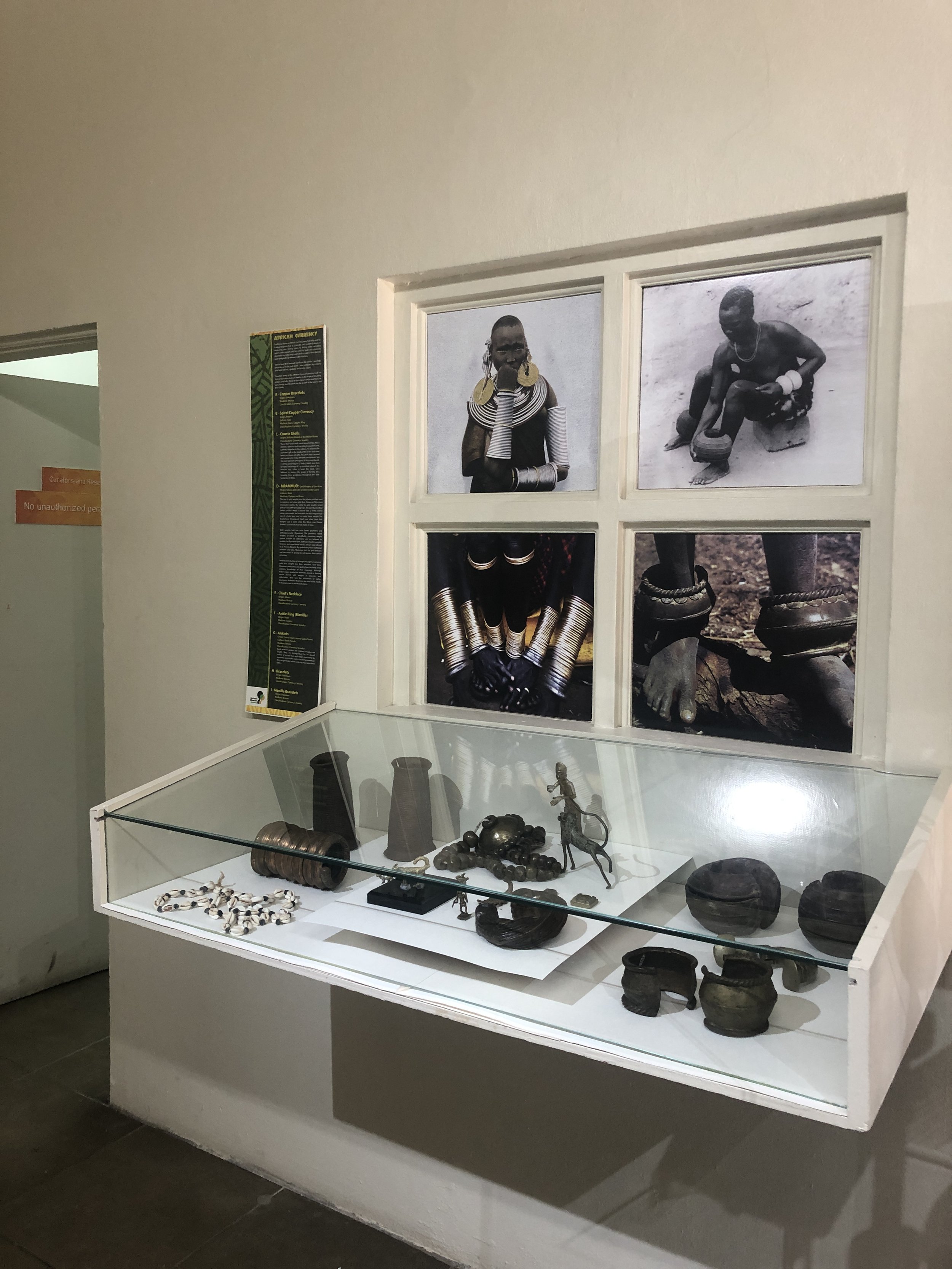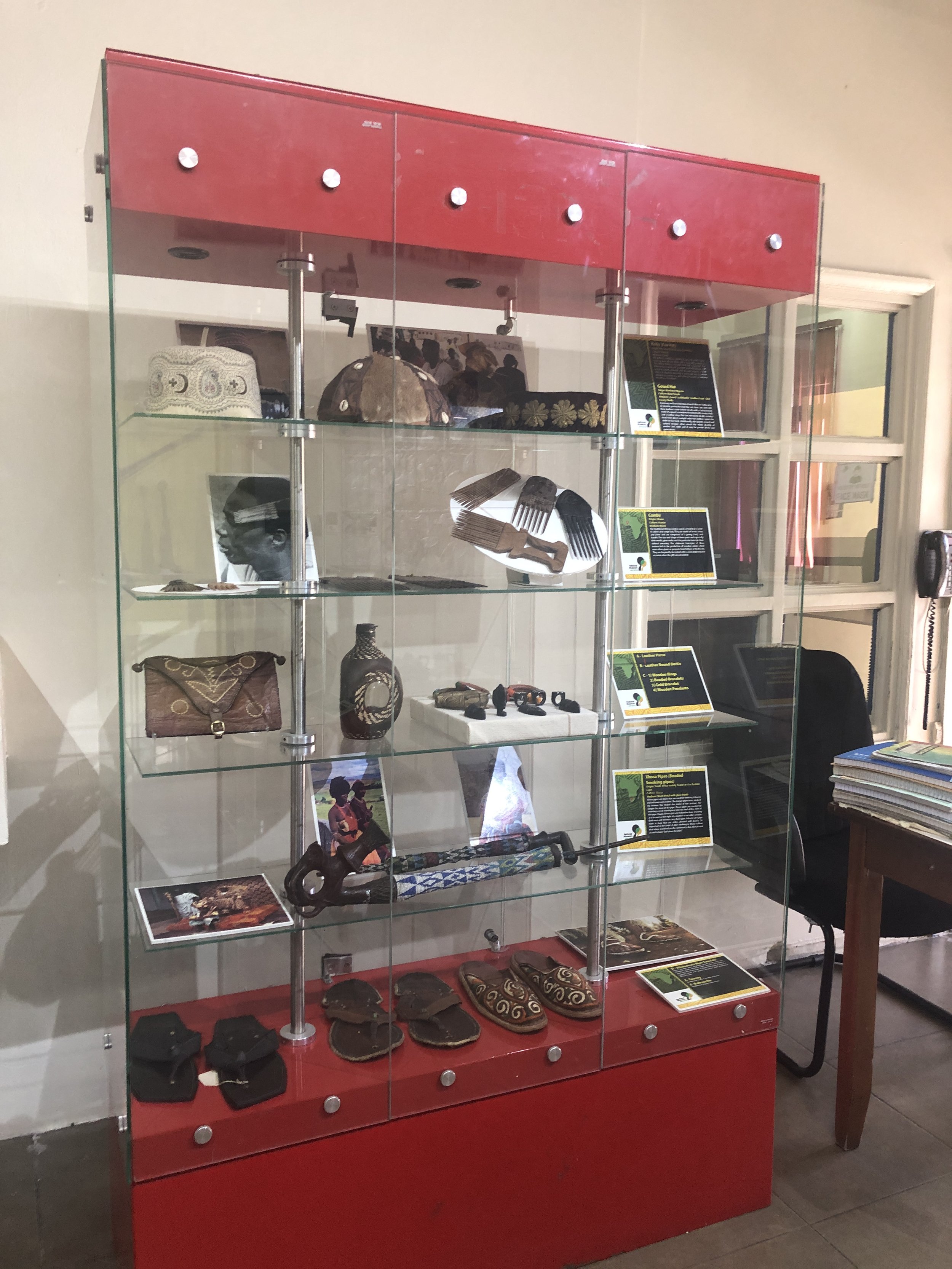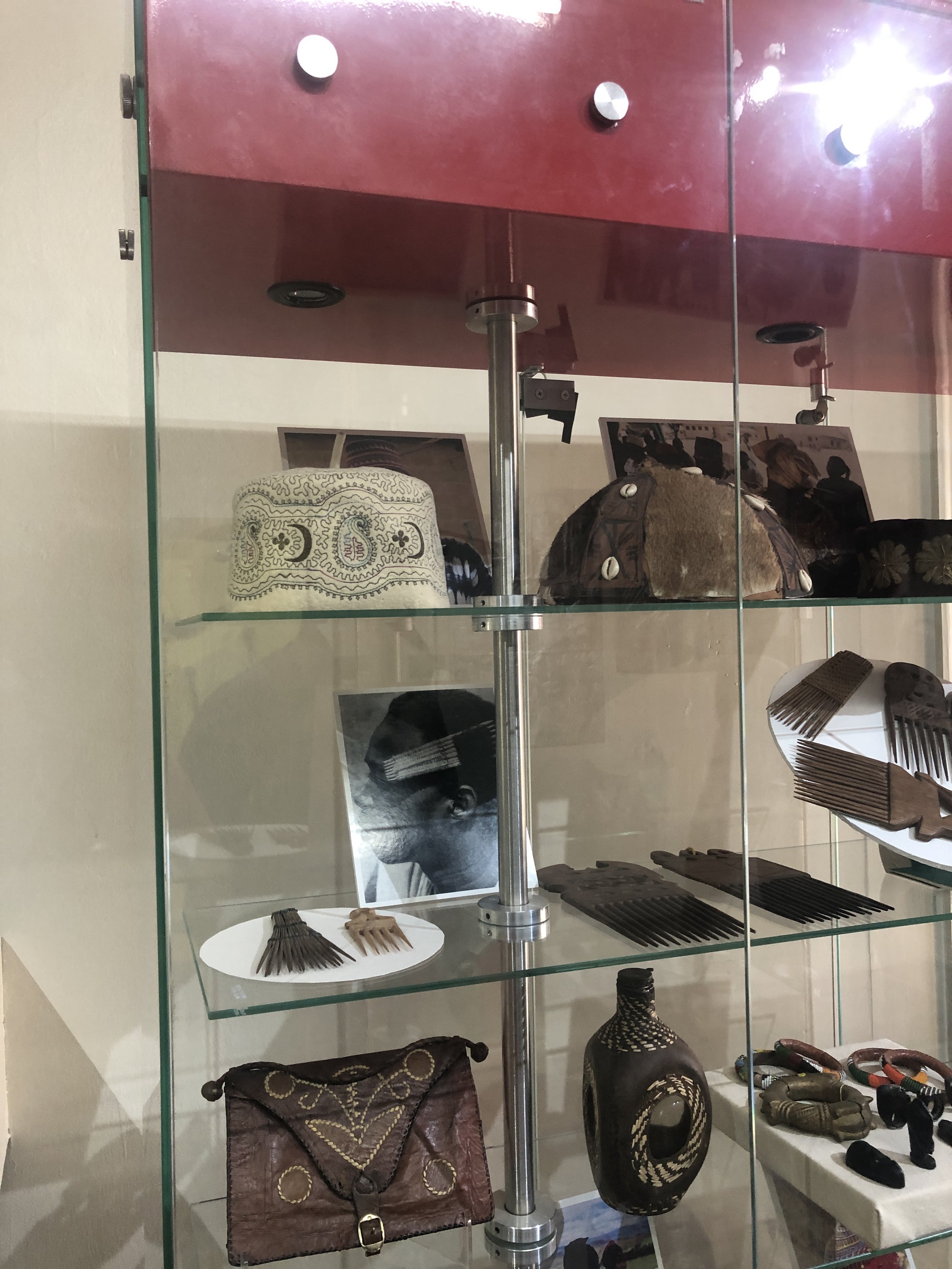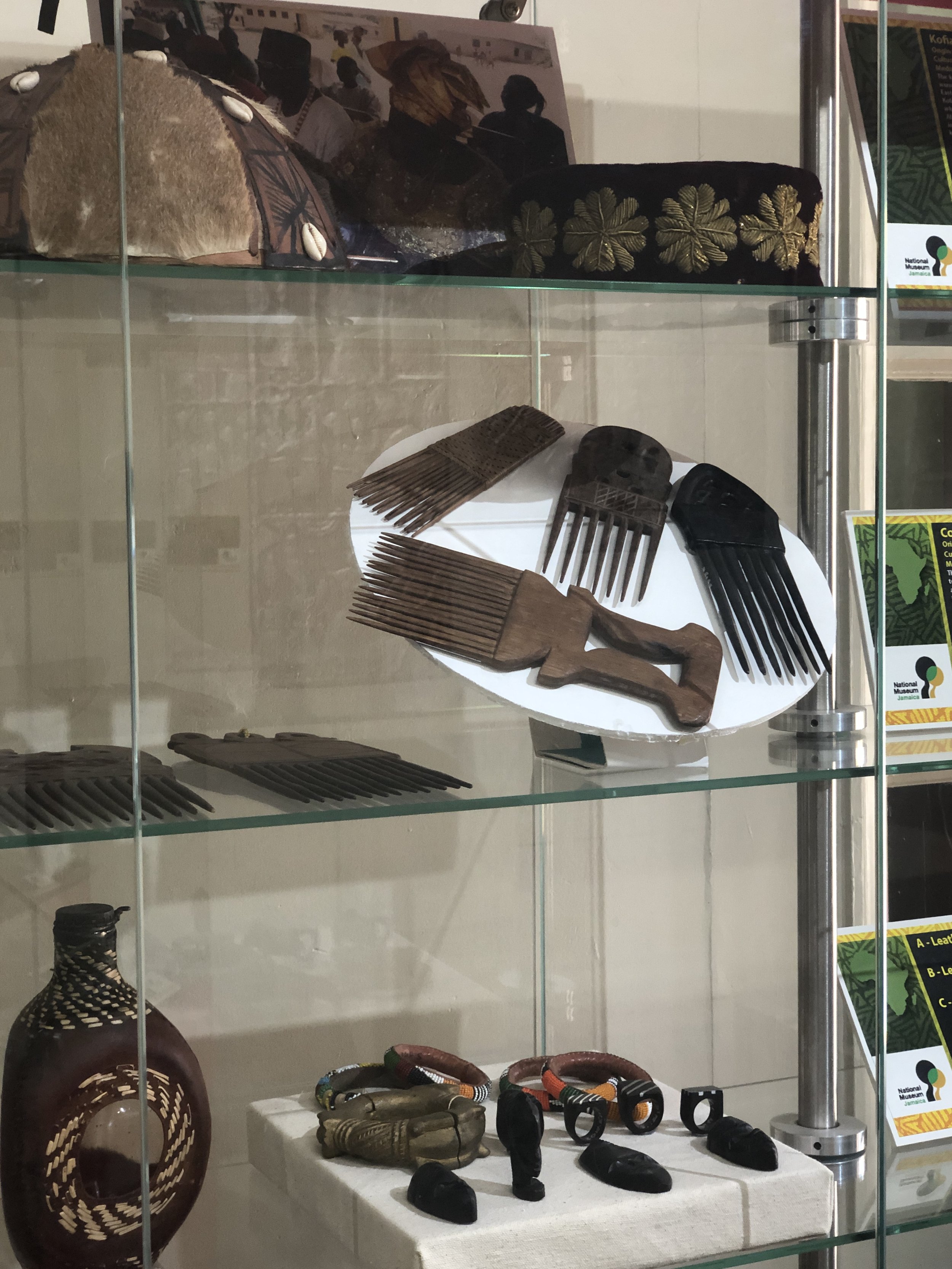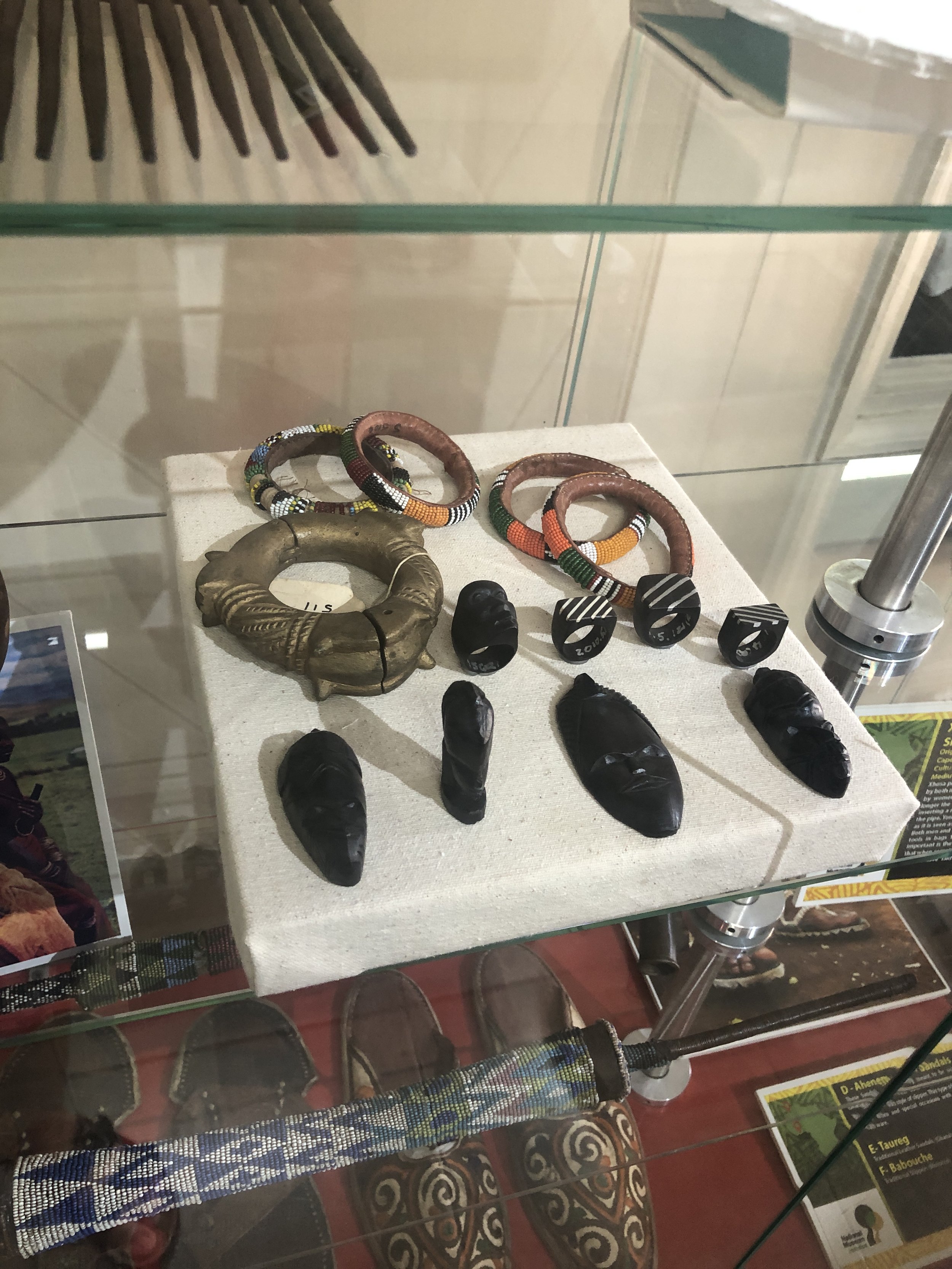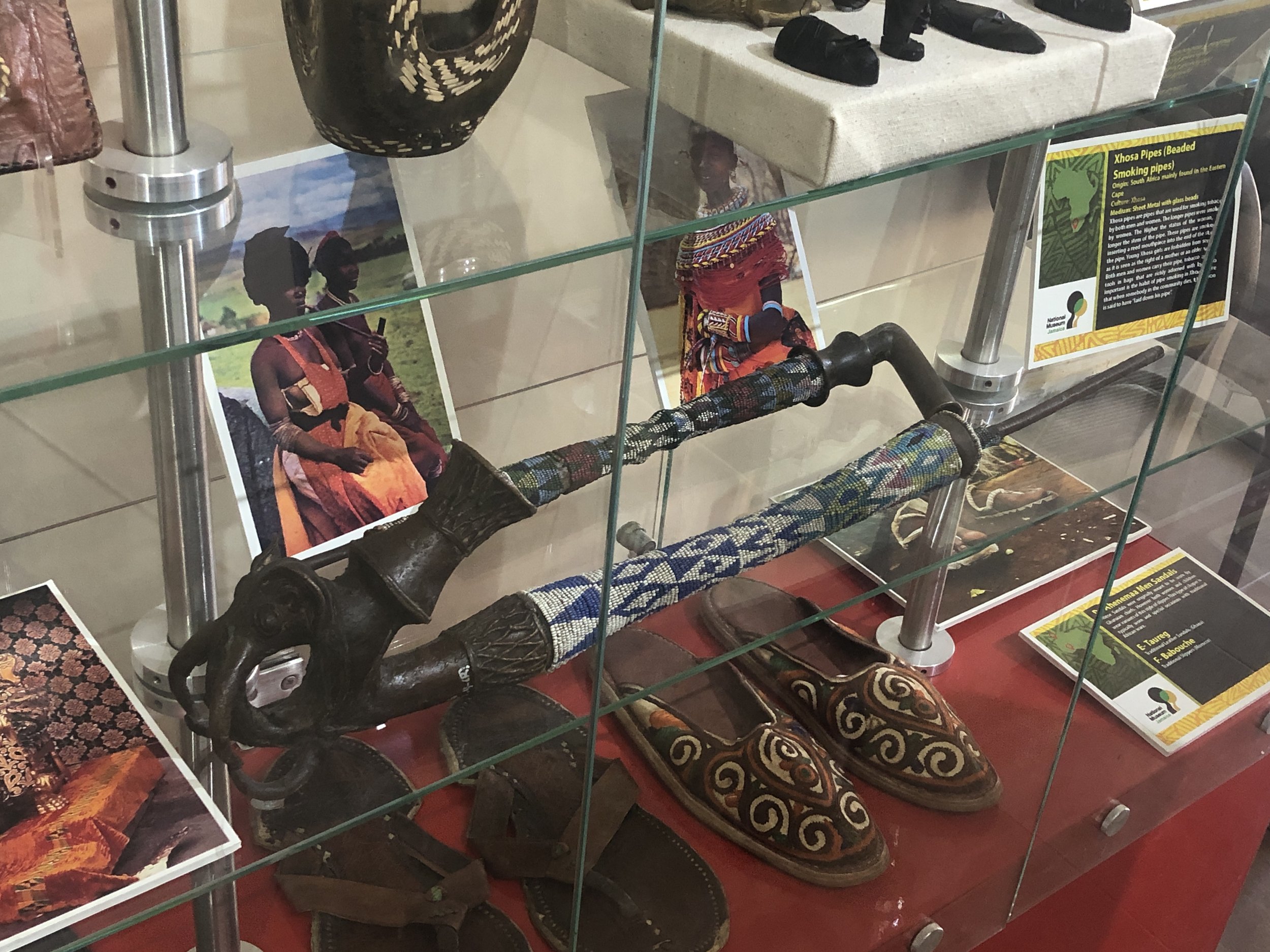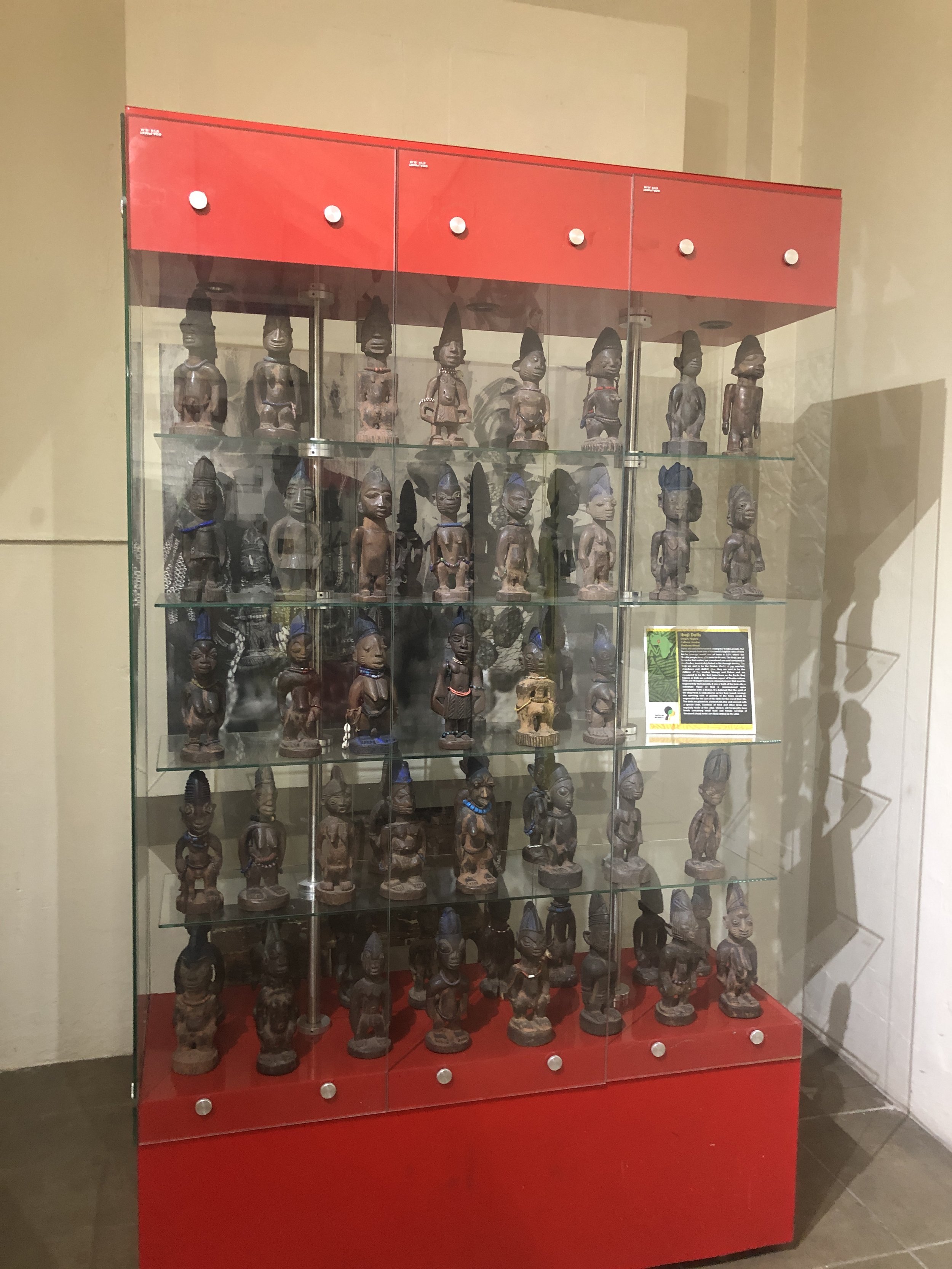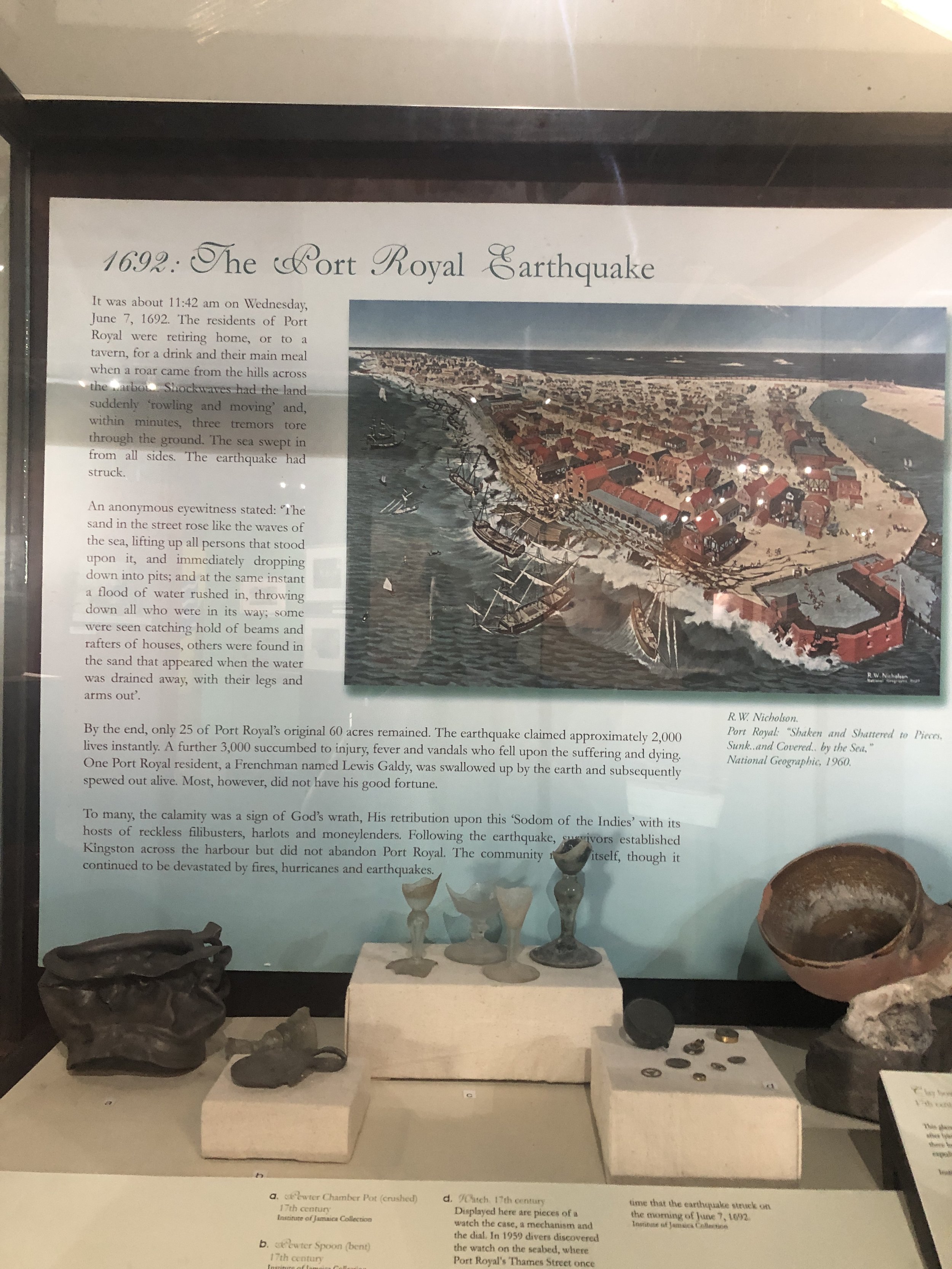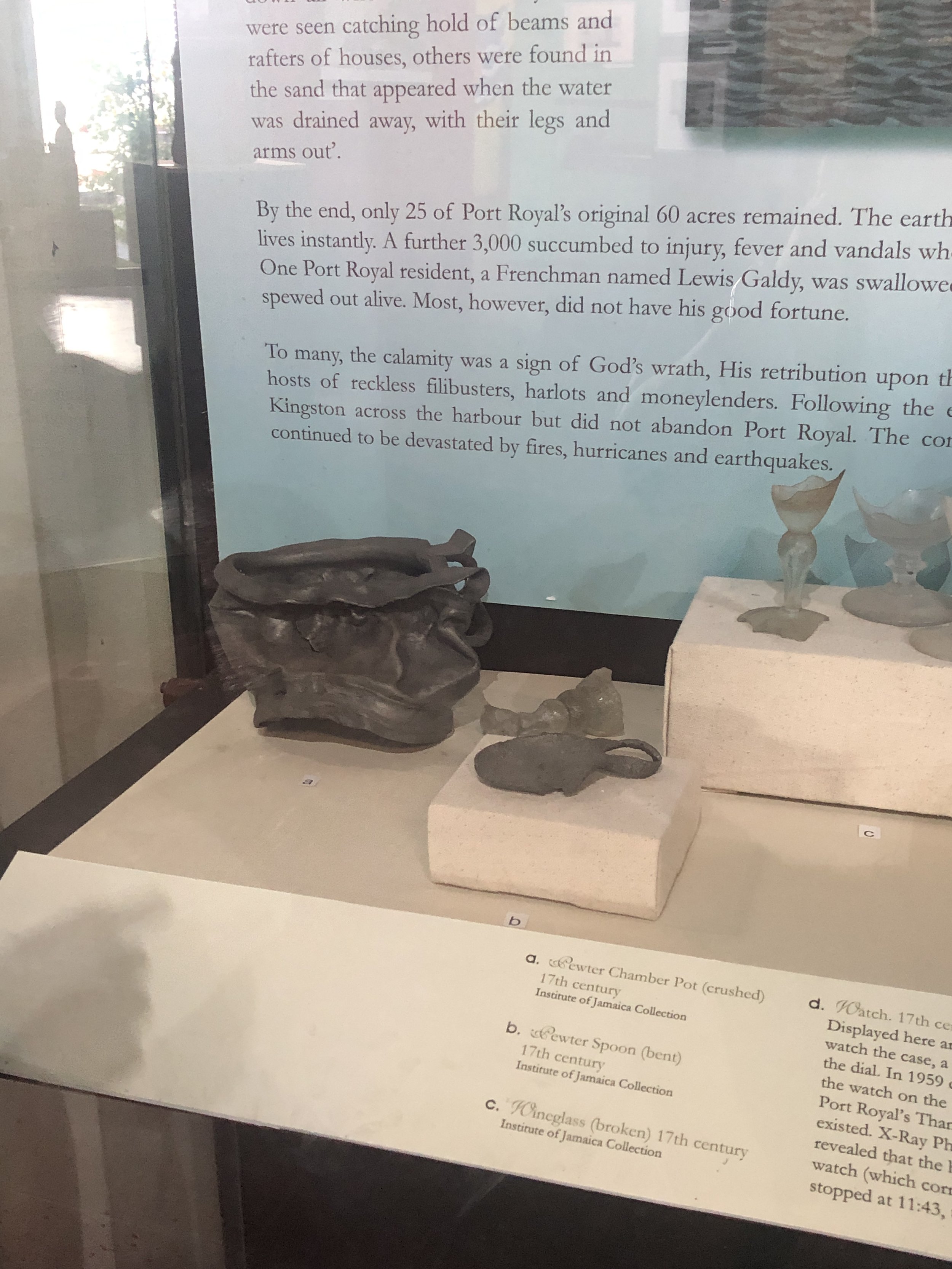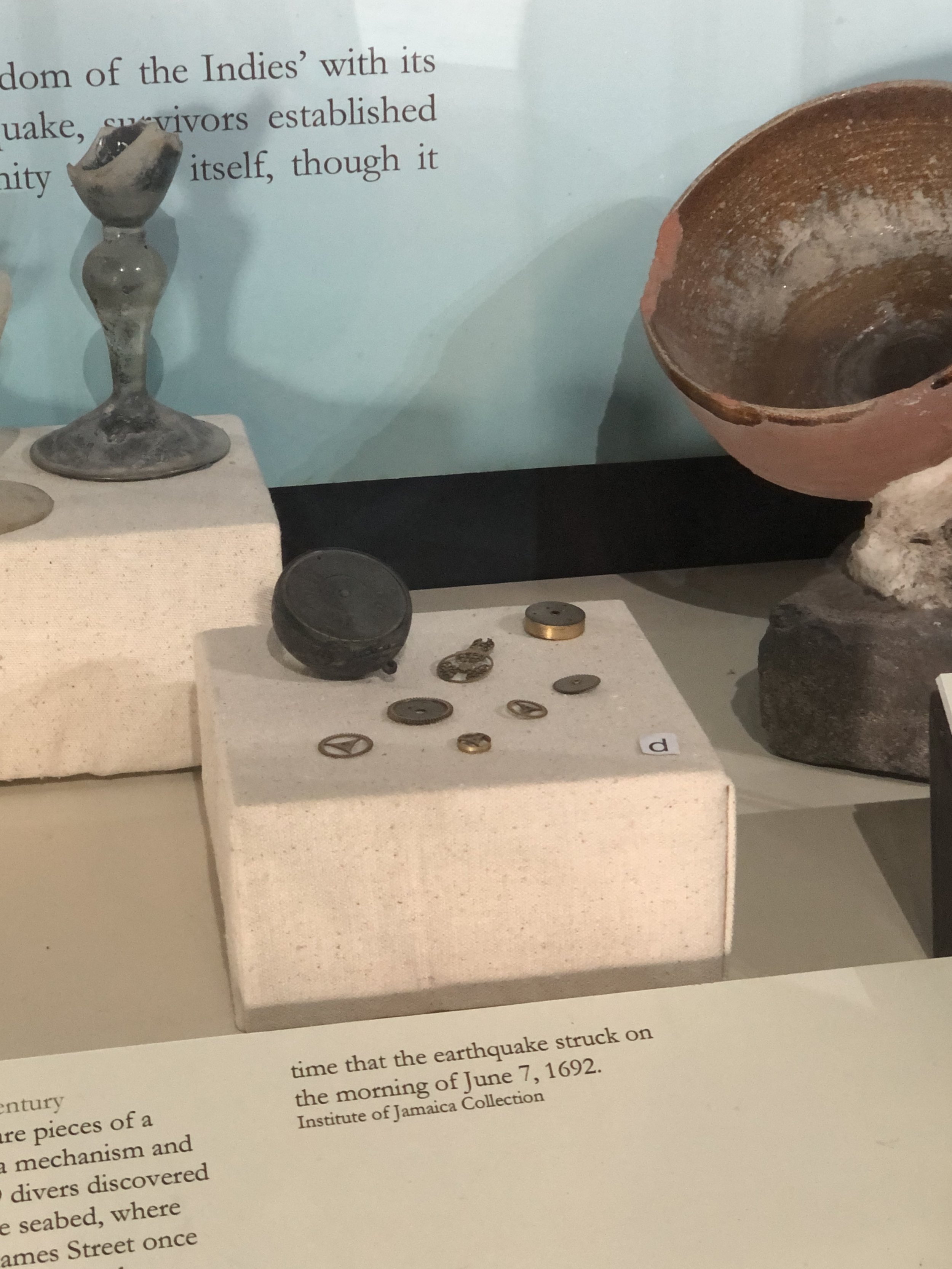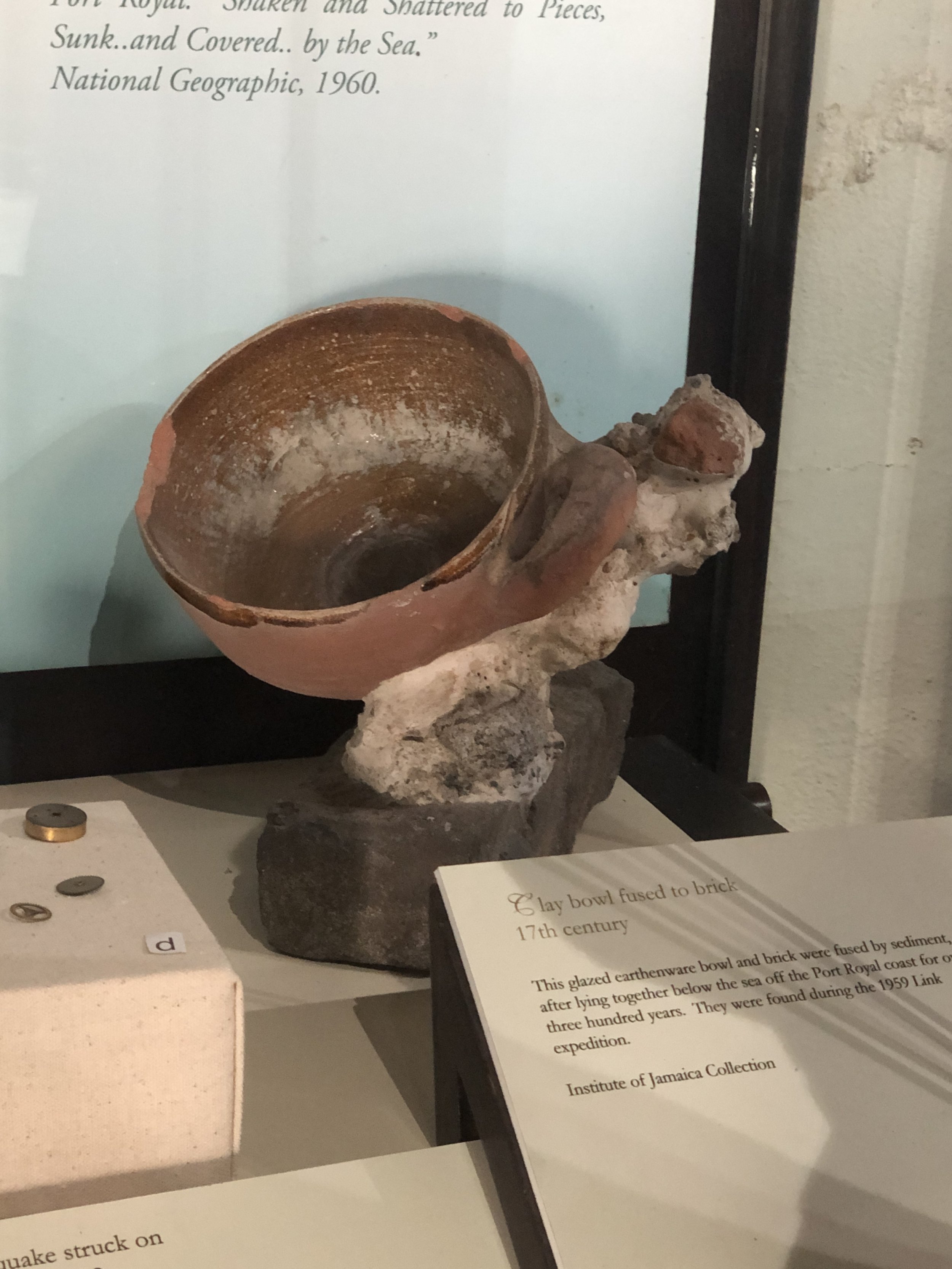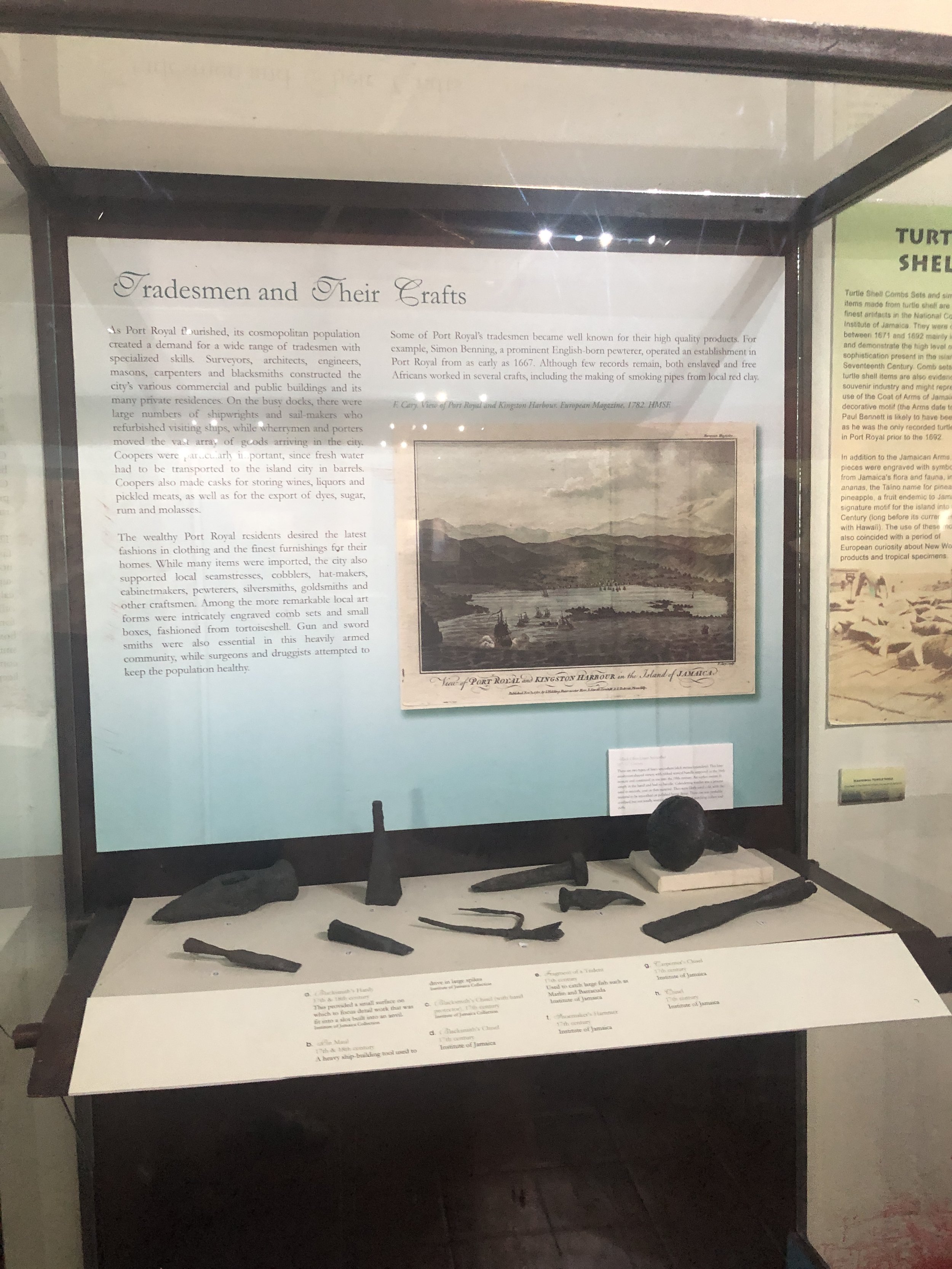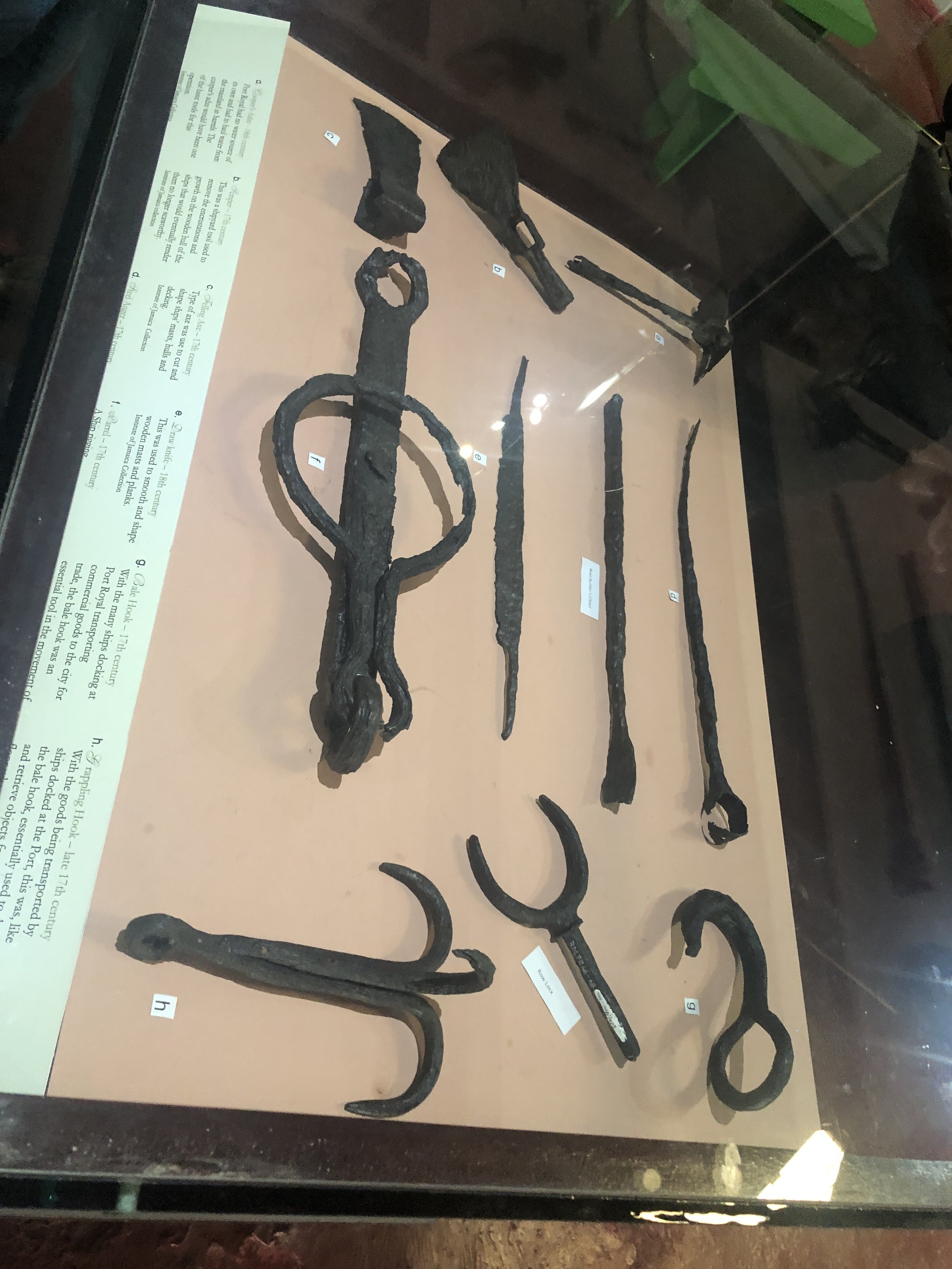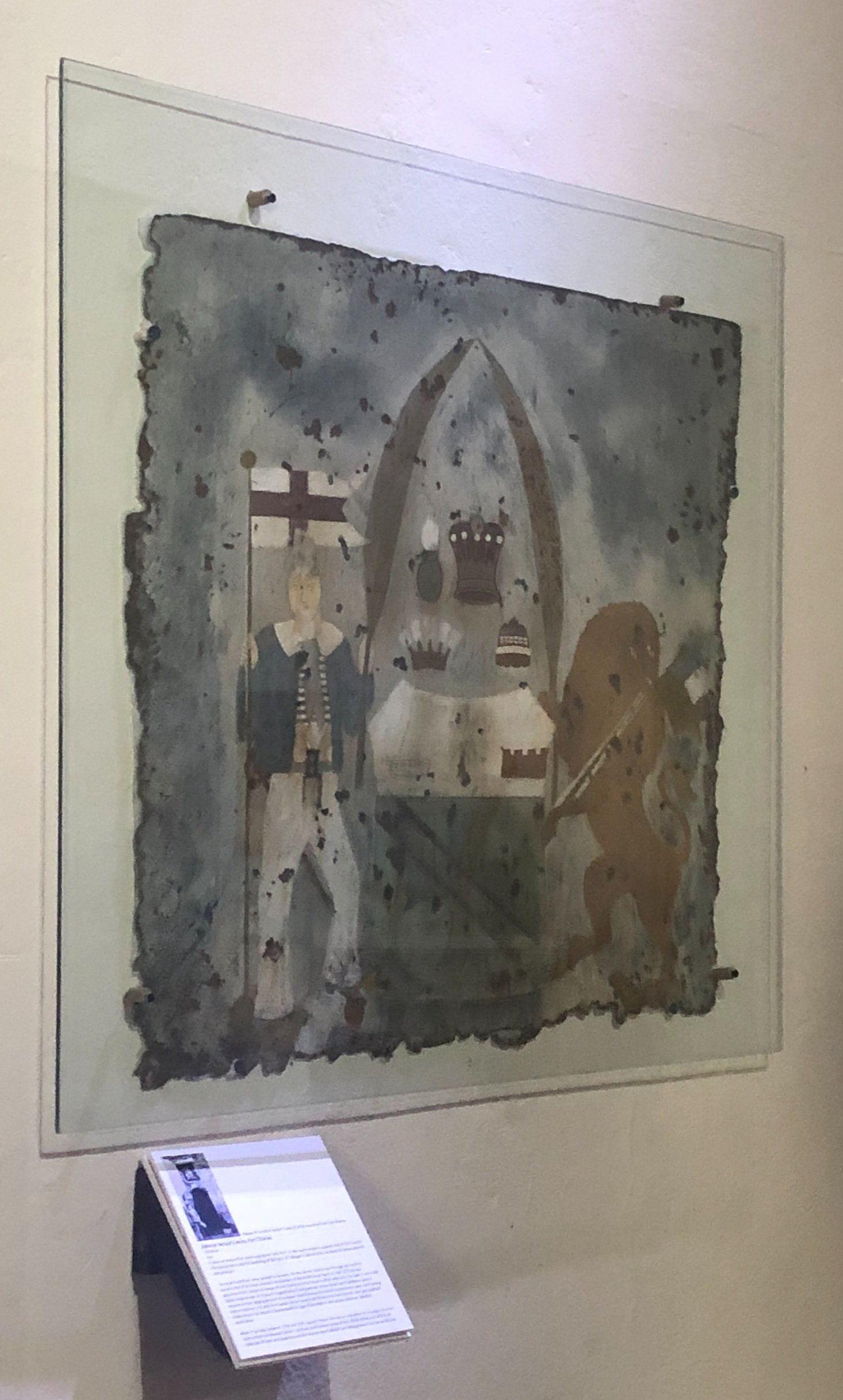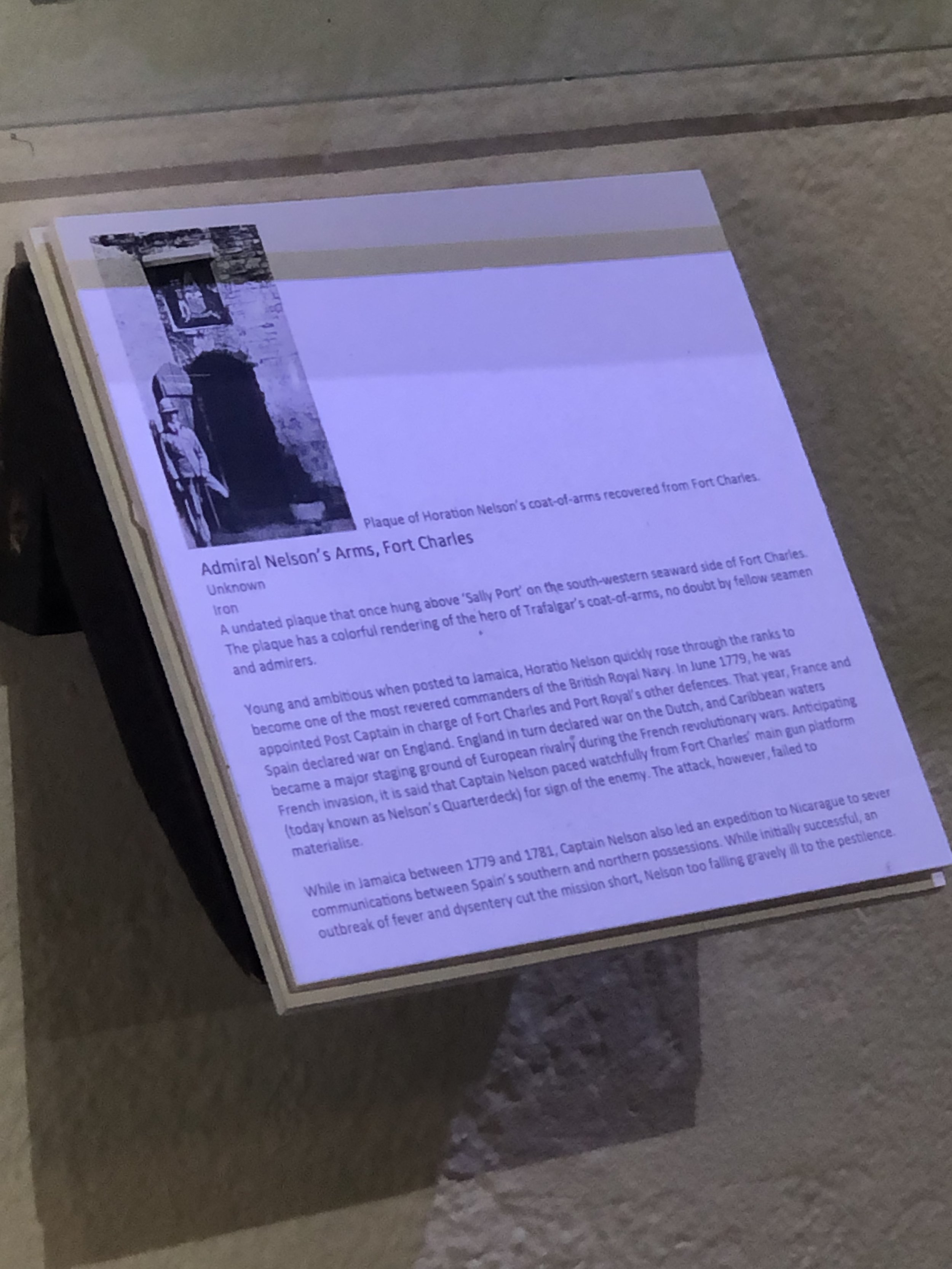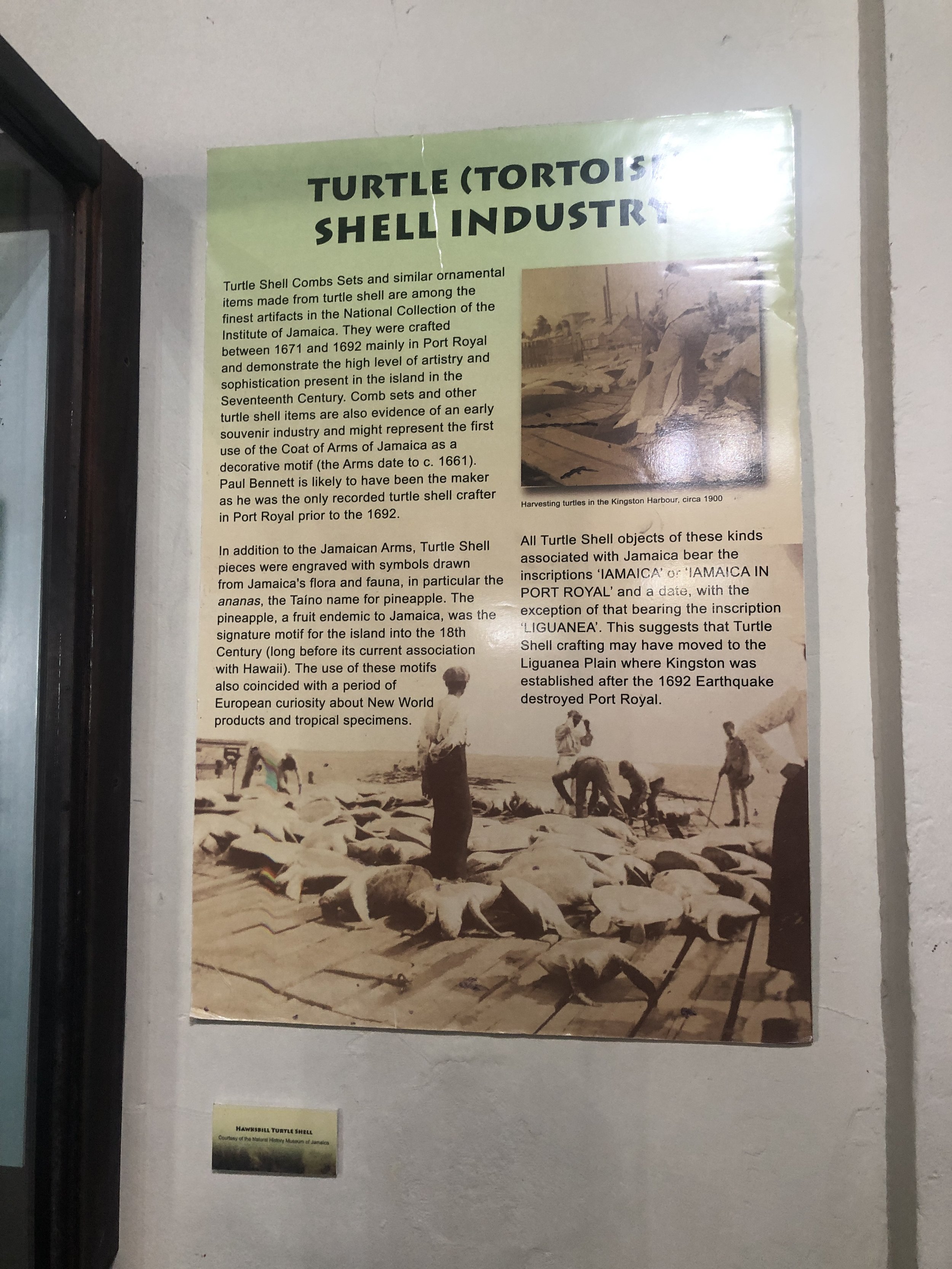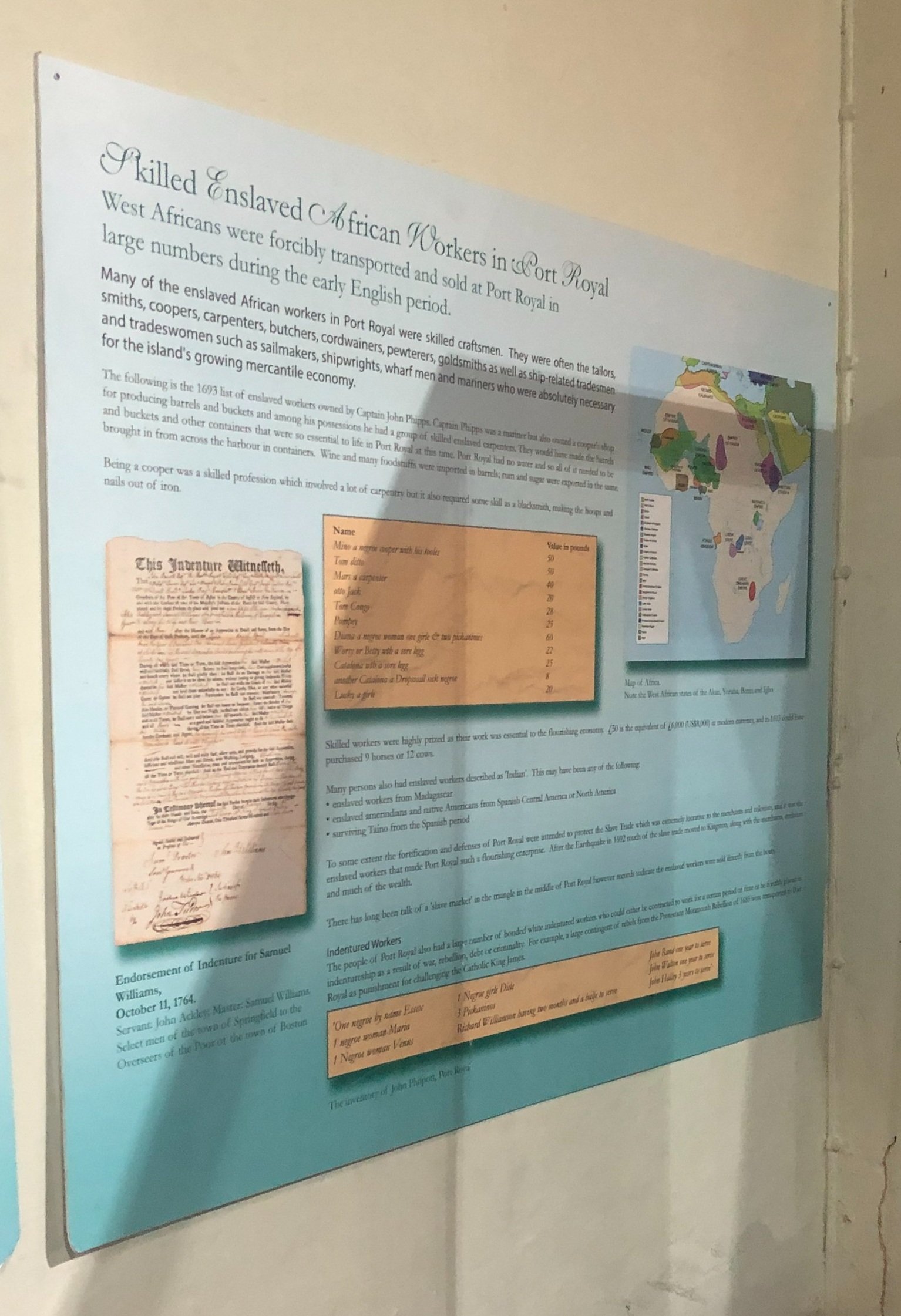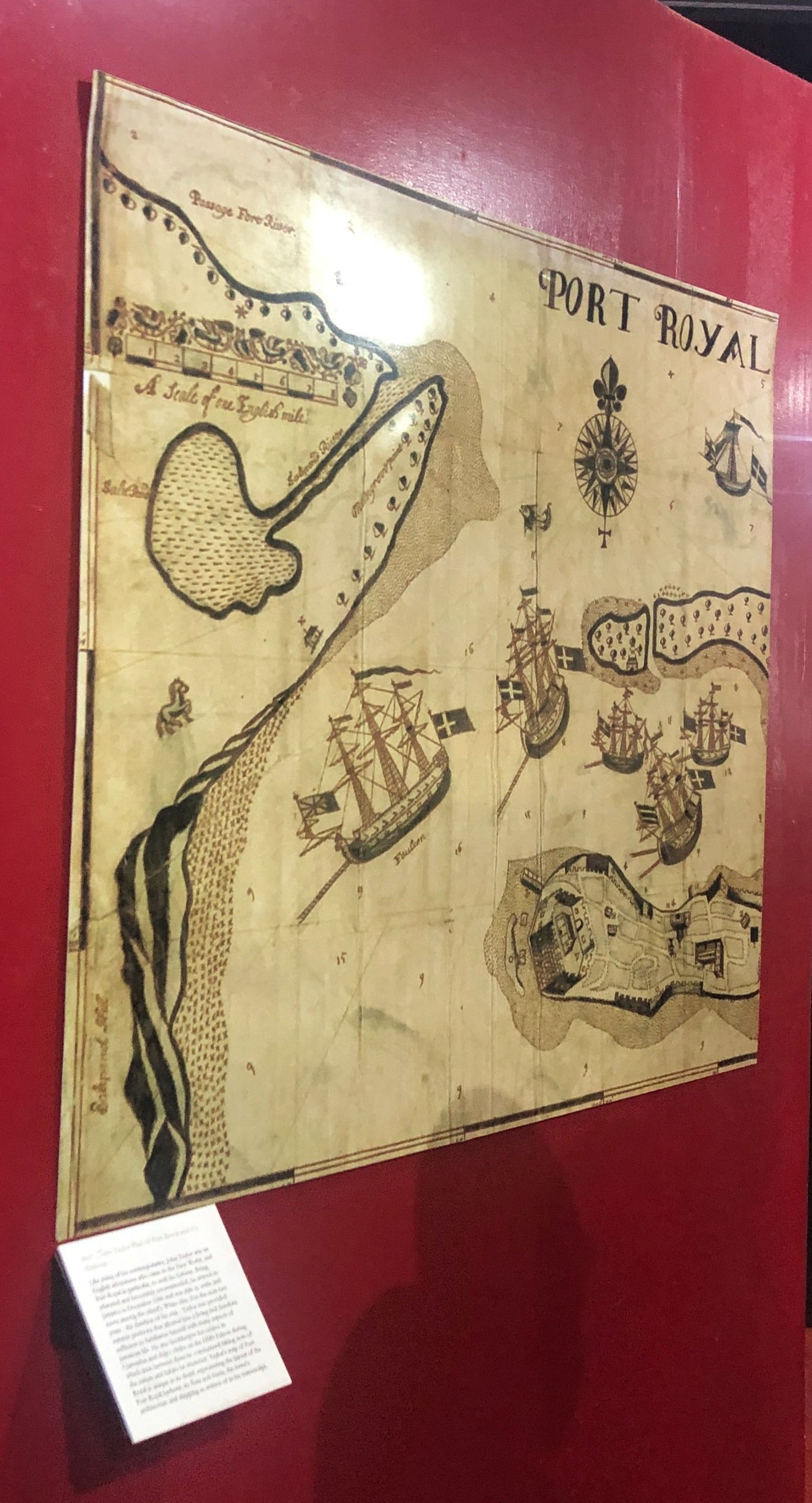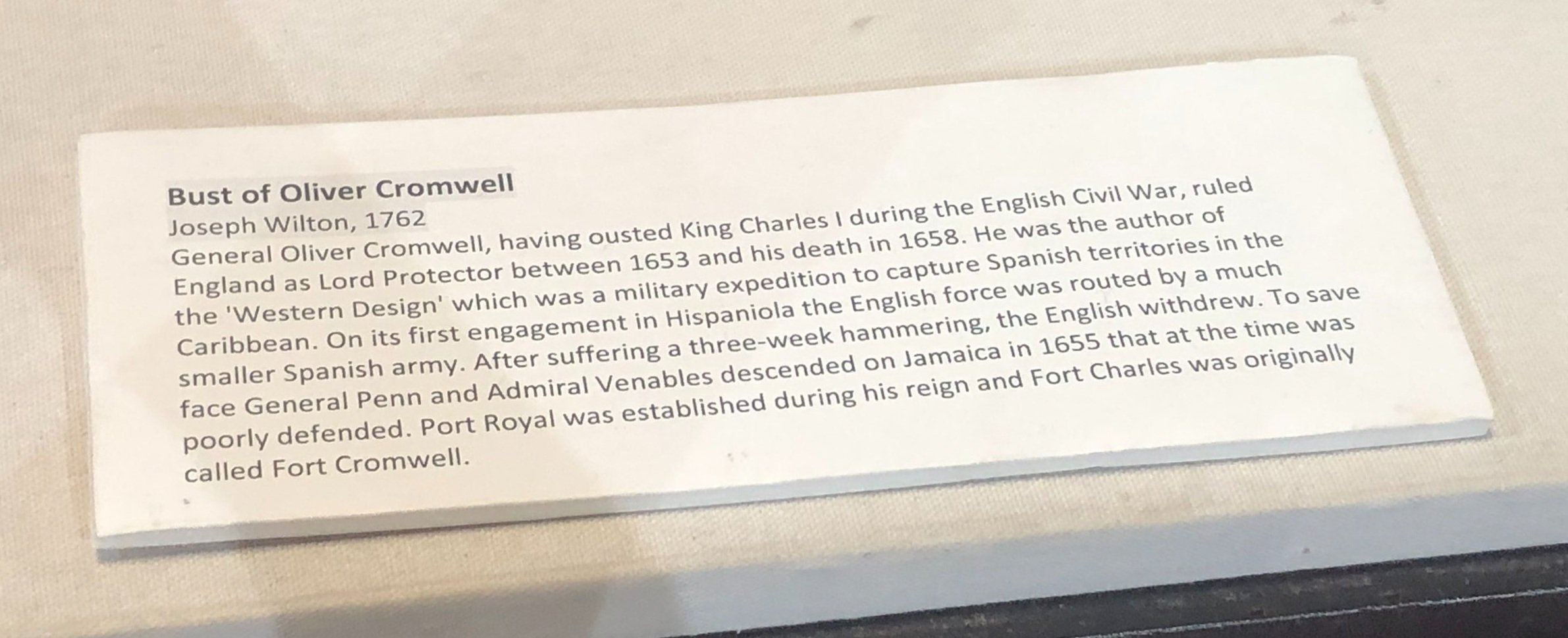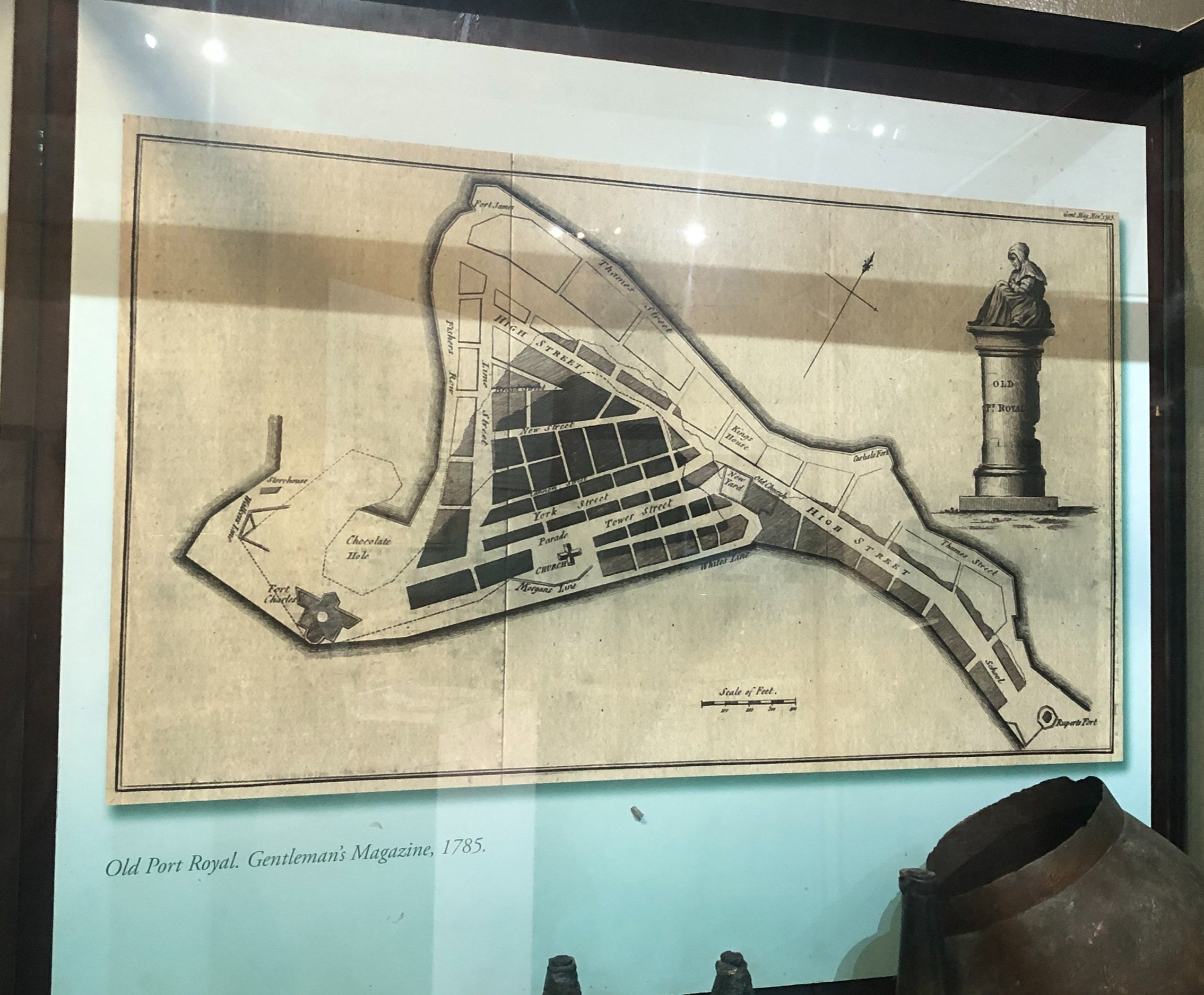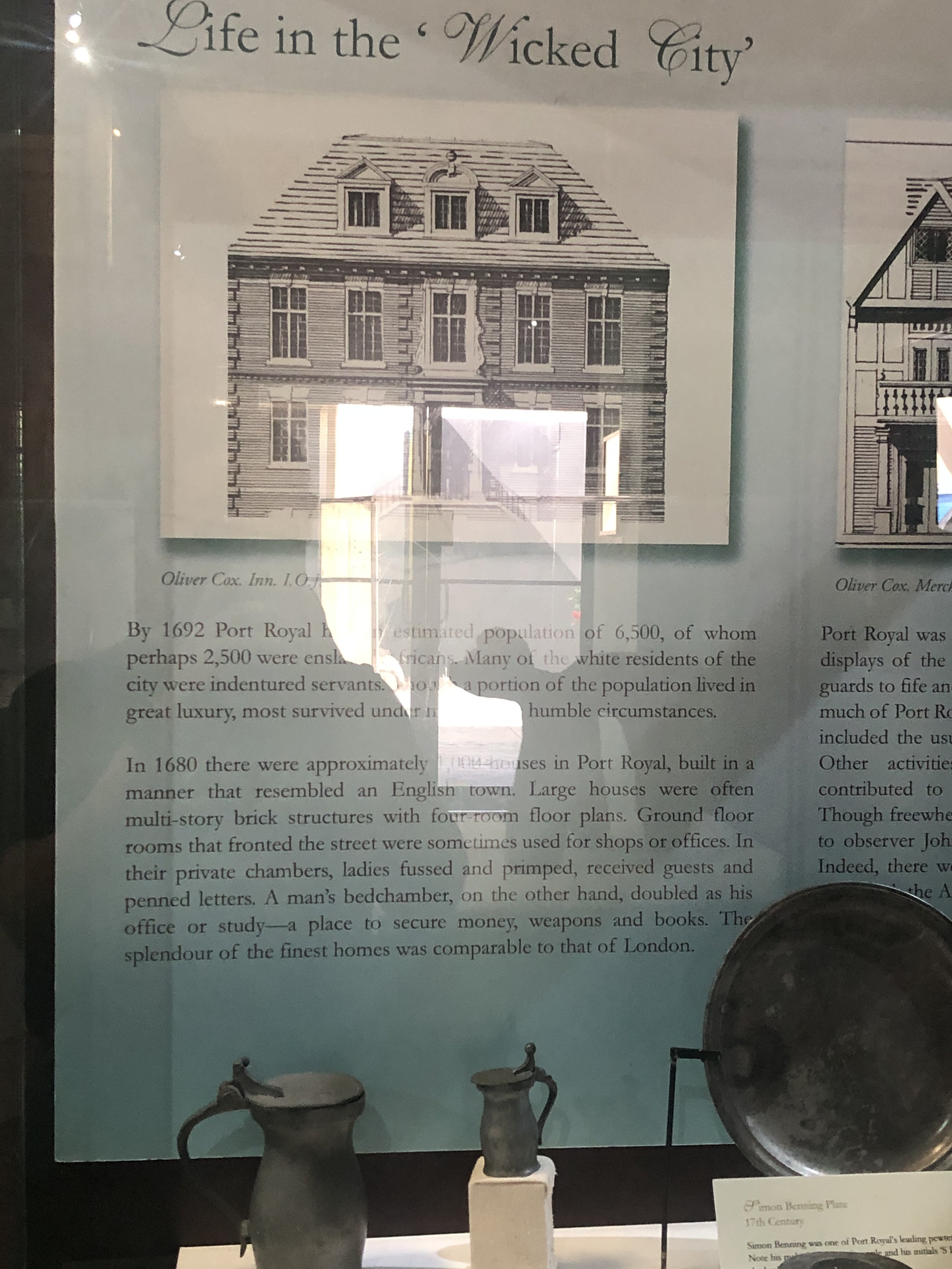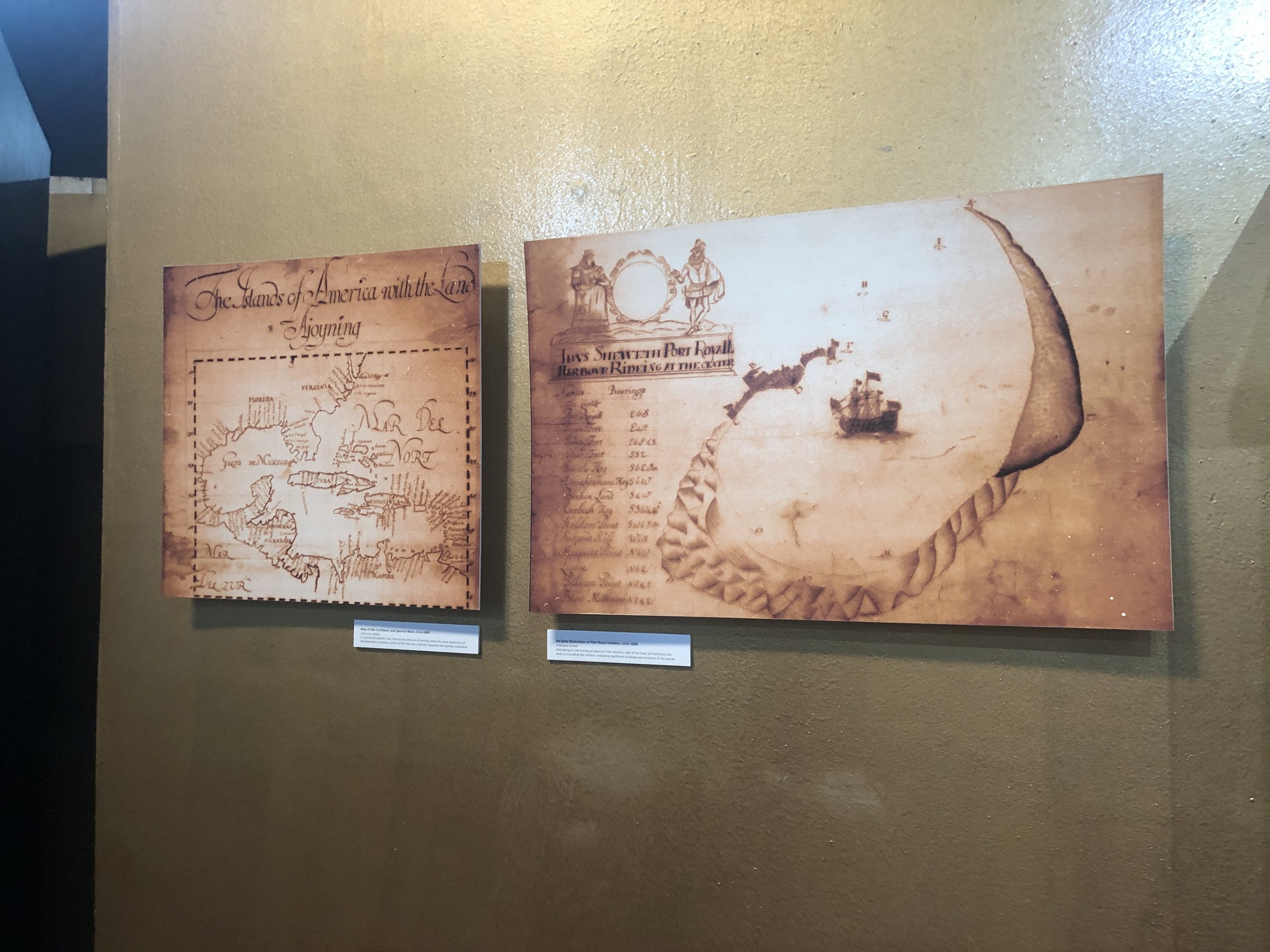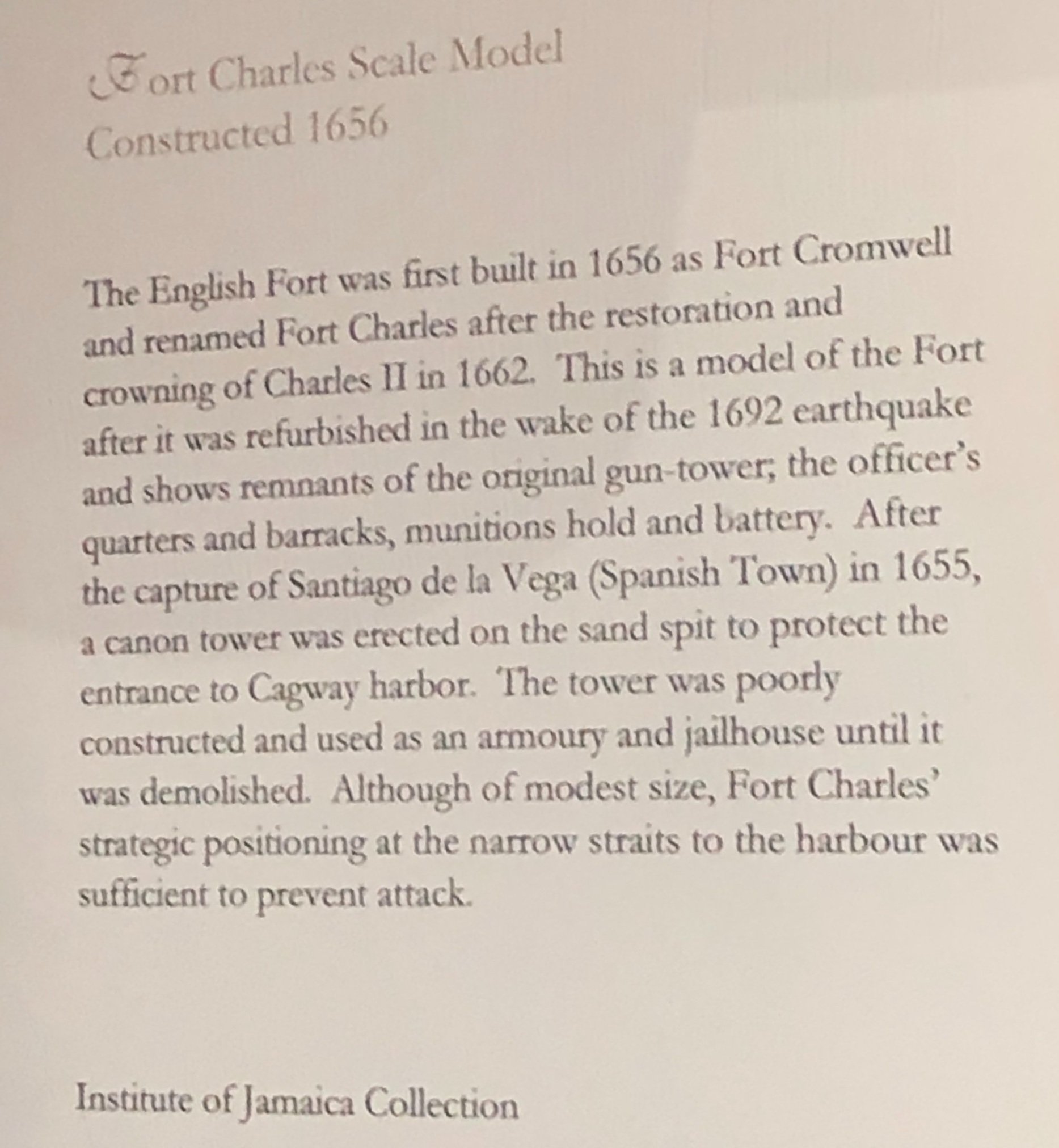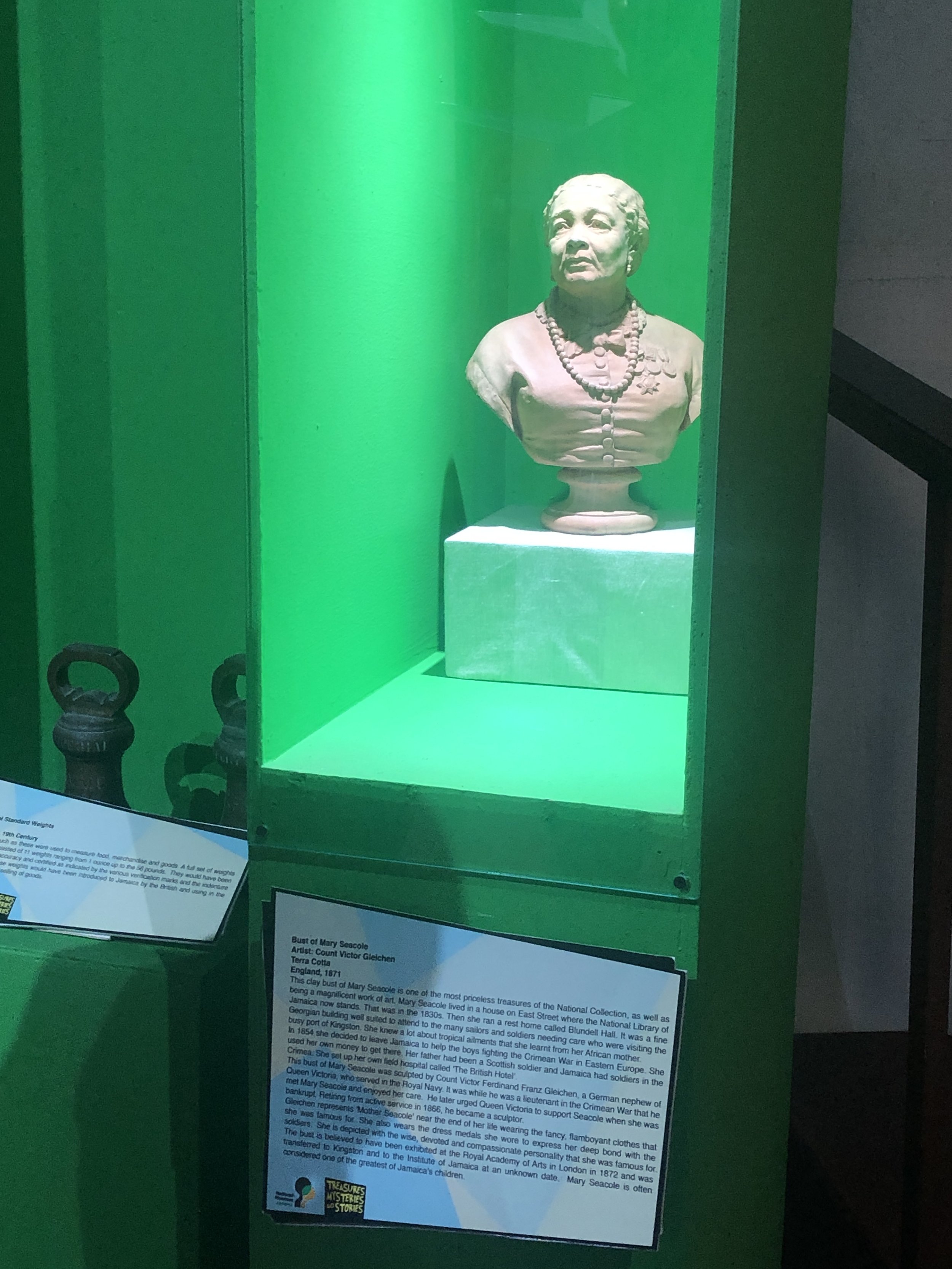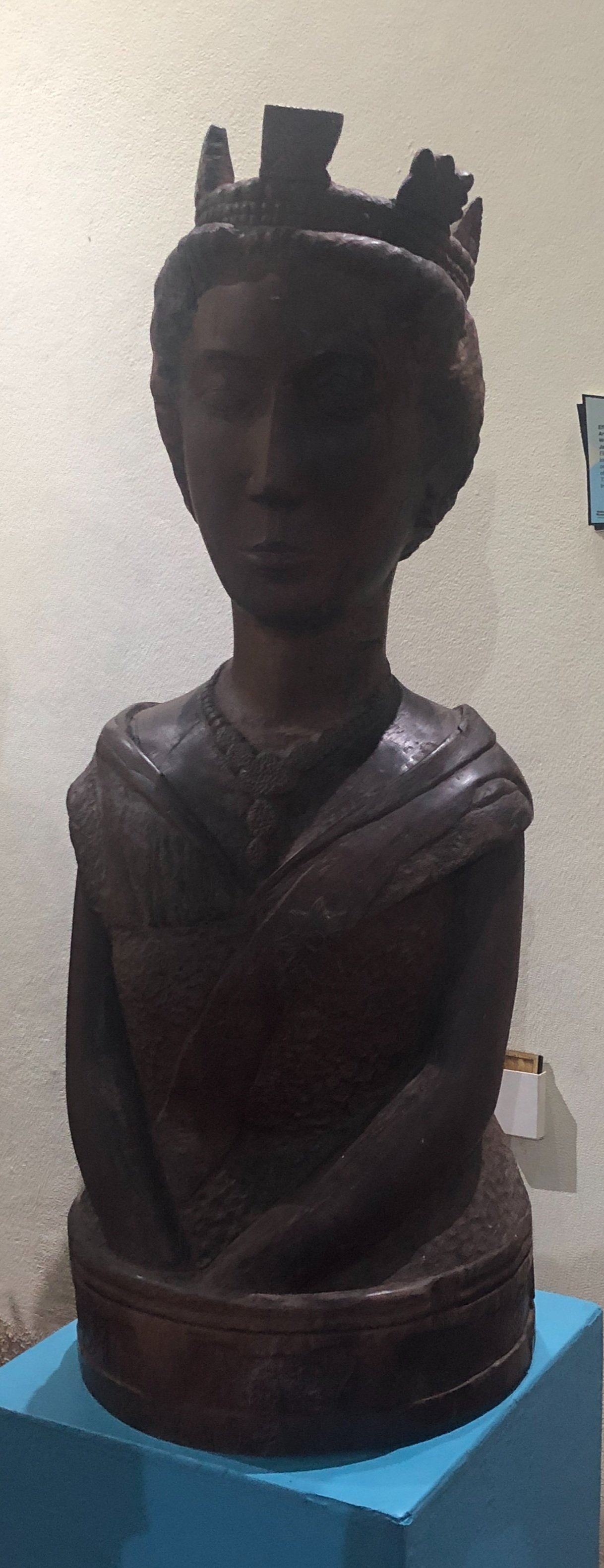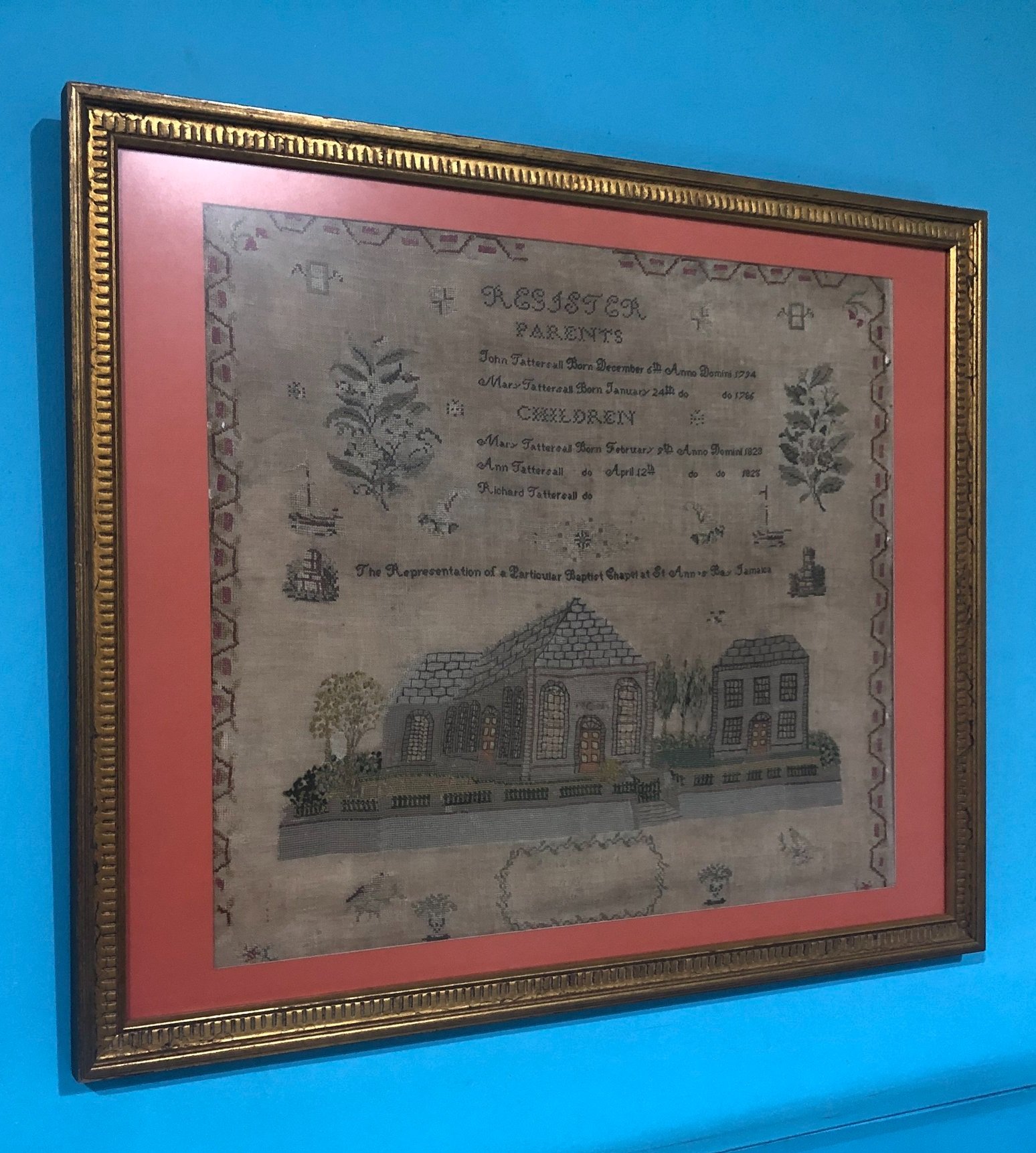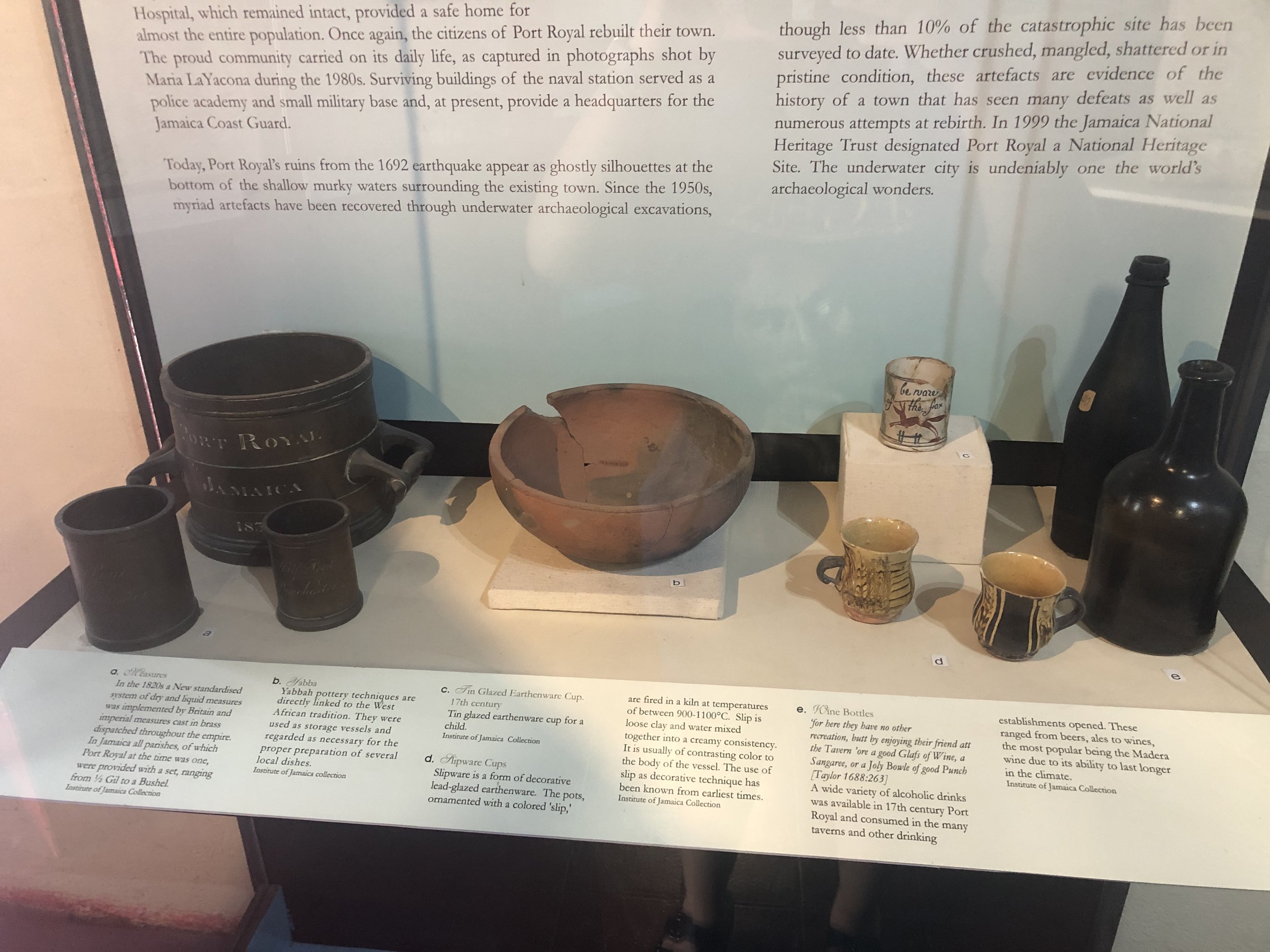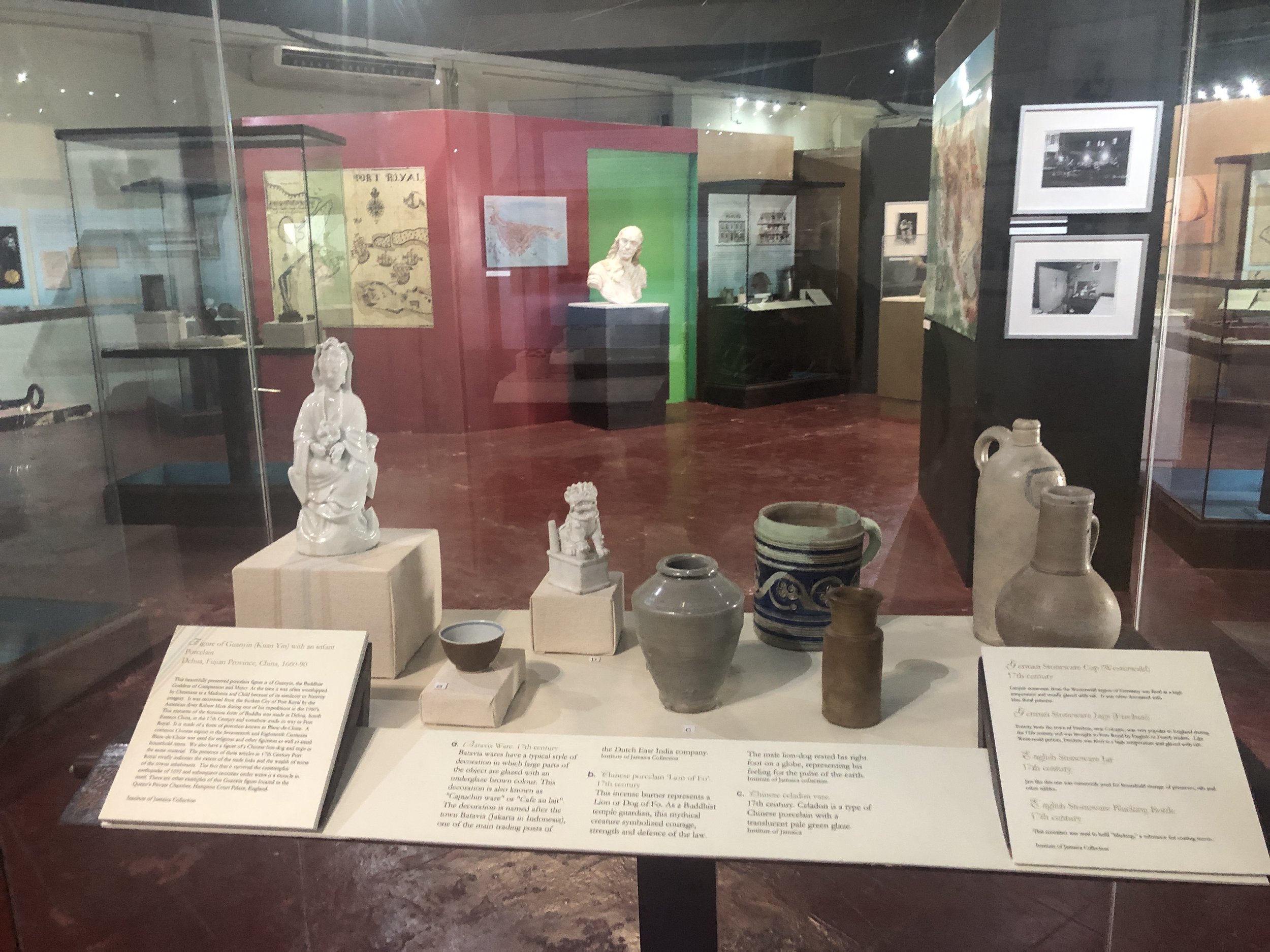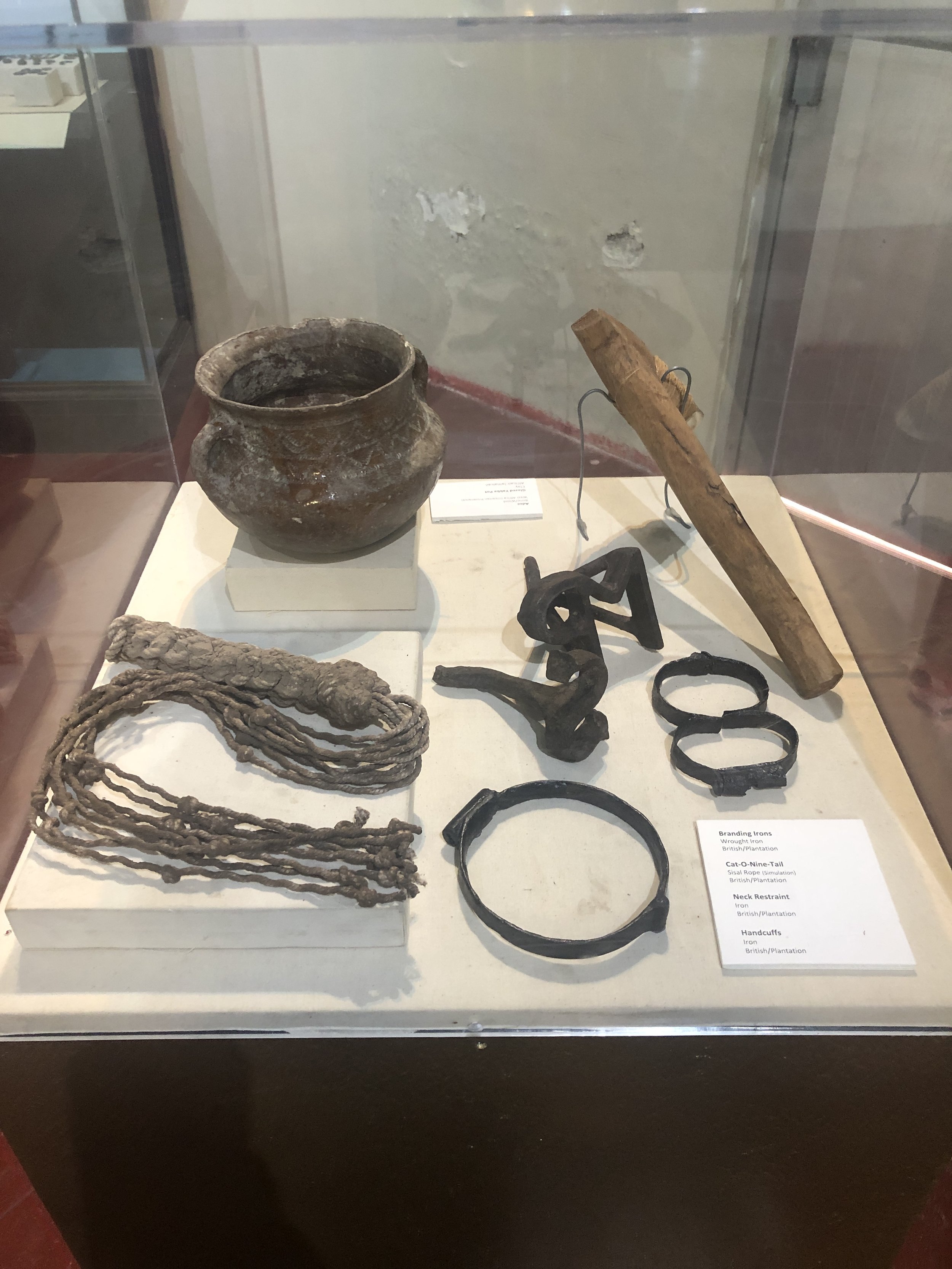National Museum Jamaica
My dad and I visited and got a wonderful tour by one of the outreach officers Stephanie Rose who explained the legacy of Taíno and African cultures in Jamaica.
My dad’s generation was taught that Arawak people inhabited Jamaica, but over decades the archaeologists found artifacts and remains that prove Taíno existed on the island. The Taíno exhibit is now a permanent part of the museum and the history is now standard in the education system which is amazing. Taíno Day has been celebrated in Jamaica since 2007 and the museum has gathered info from some descendants of the Taíno people.
Taino Exhibit
The Tainos, our native Jamaicans, were considered to have been extinct in Jamaica, knowing that this is far from the truth makes this exhibition even more fitting for Jamaicans. This exhibition allows us to know the integral role the Taino people played in our cultural retention and agricultural practices. We get the opportunity to examine their religious practices, daily life and legacy. It is certainly important and intriguing for you to explore!
-
Who were the Taíno
The Taíno were some of the earliest inhabitants of our island, Jamaica. We must thank them for the name of our country as well as many other words (including the name of foods we commonly consume).
Find out as much about them as you can from this exhibition.
Taíno culture began to emerge in the Caribbean about 1000 years ago, on the islands of Puerto Rico, Haiti/Dominican Republic, Jamaica, Cuba, and the Bahamian archipelago. Their predecessors, the descendants of seafaring peoples from different parts of the mainland. began to establish themselves on the Caribbean islands ( as far back as 5000 B.C.
The people of the Caribbean, including the Taíno, the Guanahatabey.,the Kalinago, the Lokono (Arawaks), and other island peoples, shared similar lifestyles and world-view traditions.
This is, in part, because they routinely traded and inter-married. Taino social. economic and religious system and religious systems are very similar those of the Kalinago people, who lived throughout the Windward Islands.
Boinayel Figure With Canopy
Wood. Unknown Taino artist. Jamaica. The Britsih Museum. This sculpture was found in a cave in Carpenters Mountains, Machester, Jamaica. It was used by a Taino shaman or behique for sniffing hallucinogenic coboba powder/ The behique was able to pass into other worlds of the Taino and converse with the gods, ancestors, and nature spirits. He was able to bring back messages, answers, cures and prophecies to the Taino of the earth. This sculpture is in the British Museum, London.
Reconstructive image of a Taino warrior/hunter. Puerto Rico
Zemi of Boinayel
Unknown Jamaican Taino artist.
Contemporary photograph of a Taino. Puerto Rico. The Taino people and culture covered a number of islands, including Cuba, Jamaica, Haiti, Dominican Republic, and Puerto Rico. People on the other islands such as the Dominican Republic and Puerto Rico, celebrate Taino heritage far more than we do in Jamaica.
What can you discover about the world of the Taino from this display?
Metate
Metates were heavy pieces of rock that were carved and used with hand grinders or Manos to grind corn, meat or vegetables. The stone used to make this Metate cannot be found in Jamaica which suggests this might have been brought from the mainland of Central America.
What do we use like this in kitchens today?
Celt
The Celt is a tool made from stone. The Taino made them with sharp edges to cut and chop meat and vegetables, skin, animals and scale fish. Some Celts like this one were made from beautifully coloured stones and were highly polished. They were used as gifts or as forms of exchange.
As elsewhere in the Americas, indigenous communities in Jamaica were completely decimated after the arrival of the Europeans in 1494. After only a century. most of the Taino had been wiped out by murder and disease. However, despite widespread destruction, the legacy of the Taino remains with us.
Surviving artifacts produced by the Taino people offer evidence of how their lives, their values, their craft techniques and their customs. These artifacts and ongoing scientific investigation allows us to understand the legacy of our Taino forbearers.
-
Description text goes here
-
Description text goes here
-
Myth and ritual played a central role in the lives of the Taíno. The identity of the individual and the self were all determined in relation to origin myths and connections to ancestors. A number of gods and ancestors were common subjects of Taíno art, lore, and legend. Communication with these deities was crucial in making community decisions and performing medical procedures.
Yúcahu: The Fruitful Lord of the Harvest
Yúcahu is the Taíno made spirit of fertility associated with yuca (manioc or cassava). He caused the crops to sprout, to grow, to flower, and to bear fruit. He was also the god of the sea which provided fish. Besides Yácahi there was a host of deities that belonged to the Heavenly Family. Including:
Atabey (Mother Earth)
This supreme feminine deity was reserved as an earth goddess. Attabey or Attabex has been interpreted as meaning “Mother of the Waters”. referring to her control of the fresh water rivers and lakes contained in her earth realm.
The Lord of the Dead, Maquetaurie Guayaba
The lord Coyaba safeguarded the deceased Taíno on their journey to the land of the dead, Coyaba “heaven.”
The Taíno nobility believed that they descended from the god through the lineage of the caciques.
Guided by the cacique and the behique (priest and healer) social order was maintained.
Spirits filled all natural things, so that the survival of each Taíno community depended on maintaining the goodwill of spirits and deities. The supernatural world held together Taíno society. Governance and religion, agricultural ad hunting rituals, work, play, family, and the adornment of tools and utensils all reflected spiritual bonds.
The Taíno believed that everything had a spiritual nature and this was explained through their tales and myths. A good life was rewarded by a good afterlife. According to their class, the dead were buried with food and clothing, jewelry, tools, and utensils.
Zemis or idols represent deities and ancestors worshipped by the Taíno and were used in public rituals and ceremonies. The Spaniards who first came into contact with Taíno in the late 1490s report that the local people considered zemis not simply powerful objects, but spirit beings that behaved like the living: moving about, speaking, consuming food, and partaking of the drug cohoba.
Who was the Behique?
Shamanism played an important role in Taíno religion and cosmology.
The Behique or Bohuti was the Taíno shaman who interceded between human beings, gods, ancestors, and the spirit world. Important events such as births, initiations, celebrations, deaths and wars were surrounded with rituals. The ritual specialists, priests and shamans were important authorities in Taíno society and they often stood beside chiefs and kings.queens (caciques/cacicas) in rulership. The Behique would be an expert in natural medicine.
-

